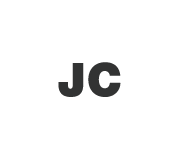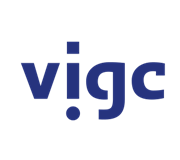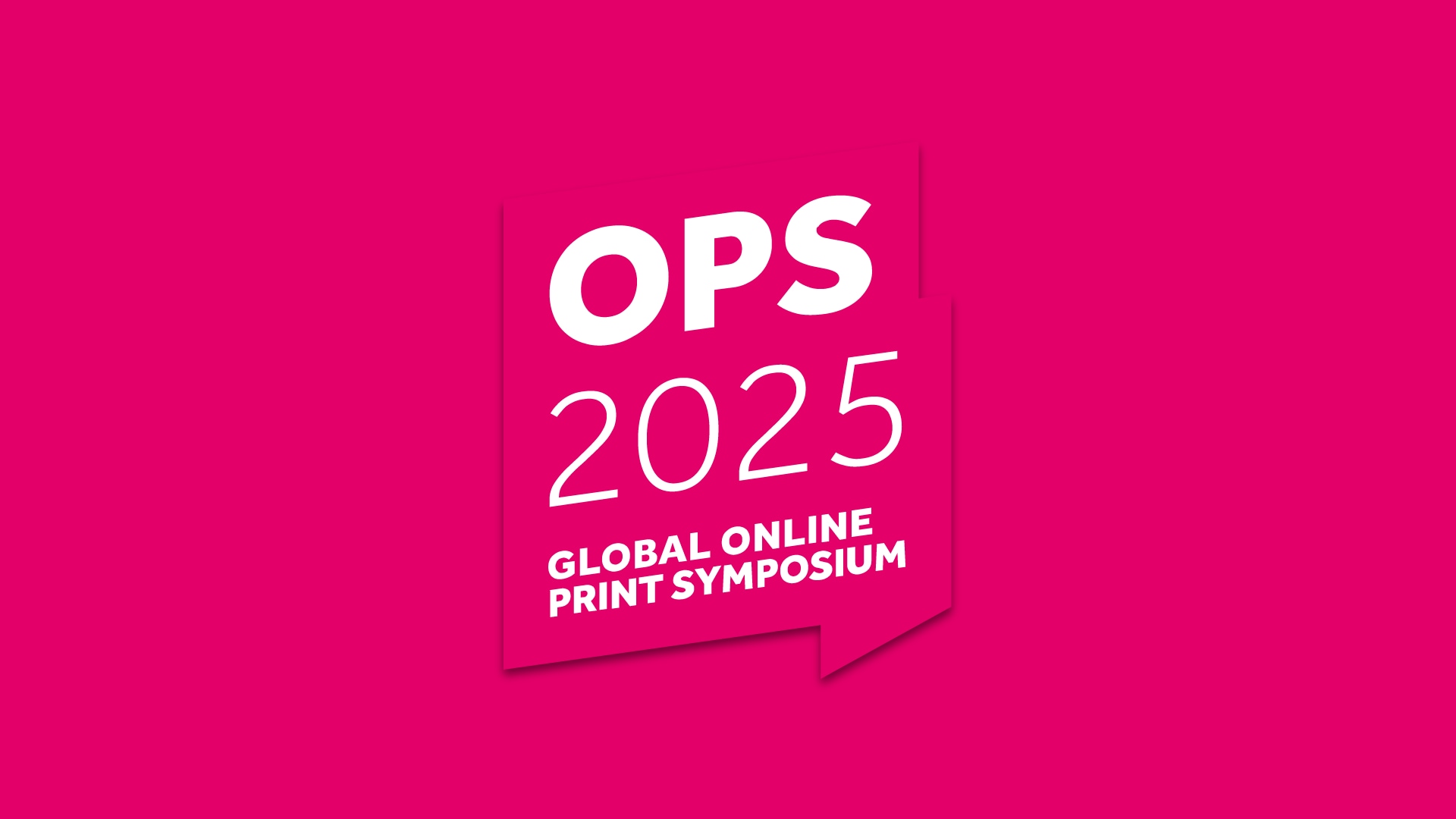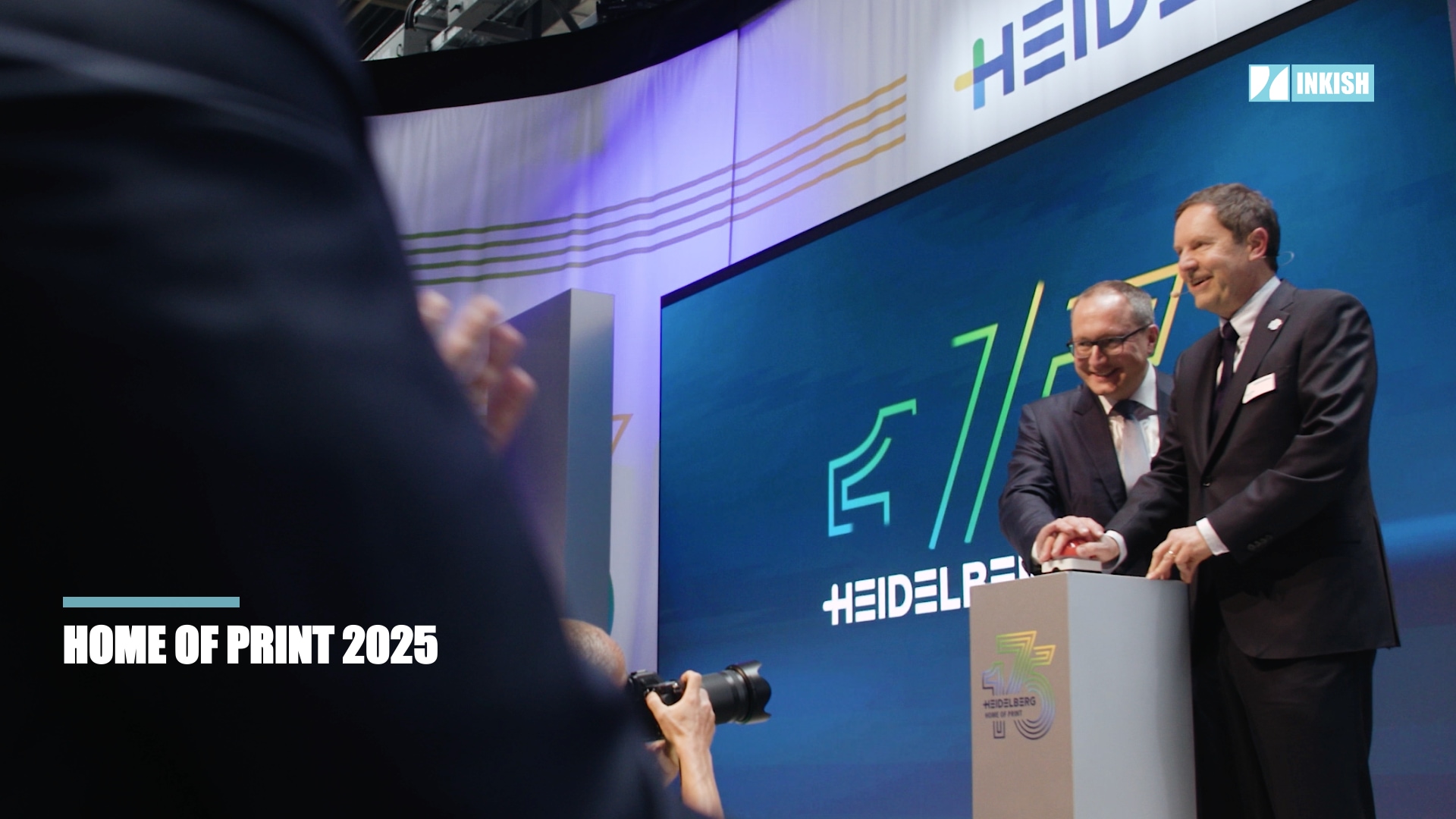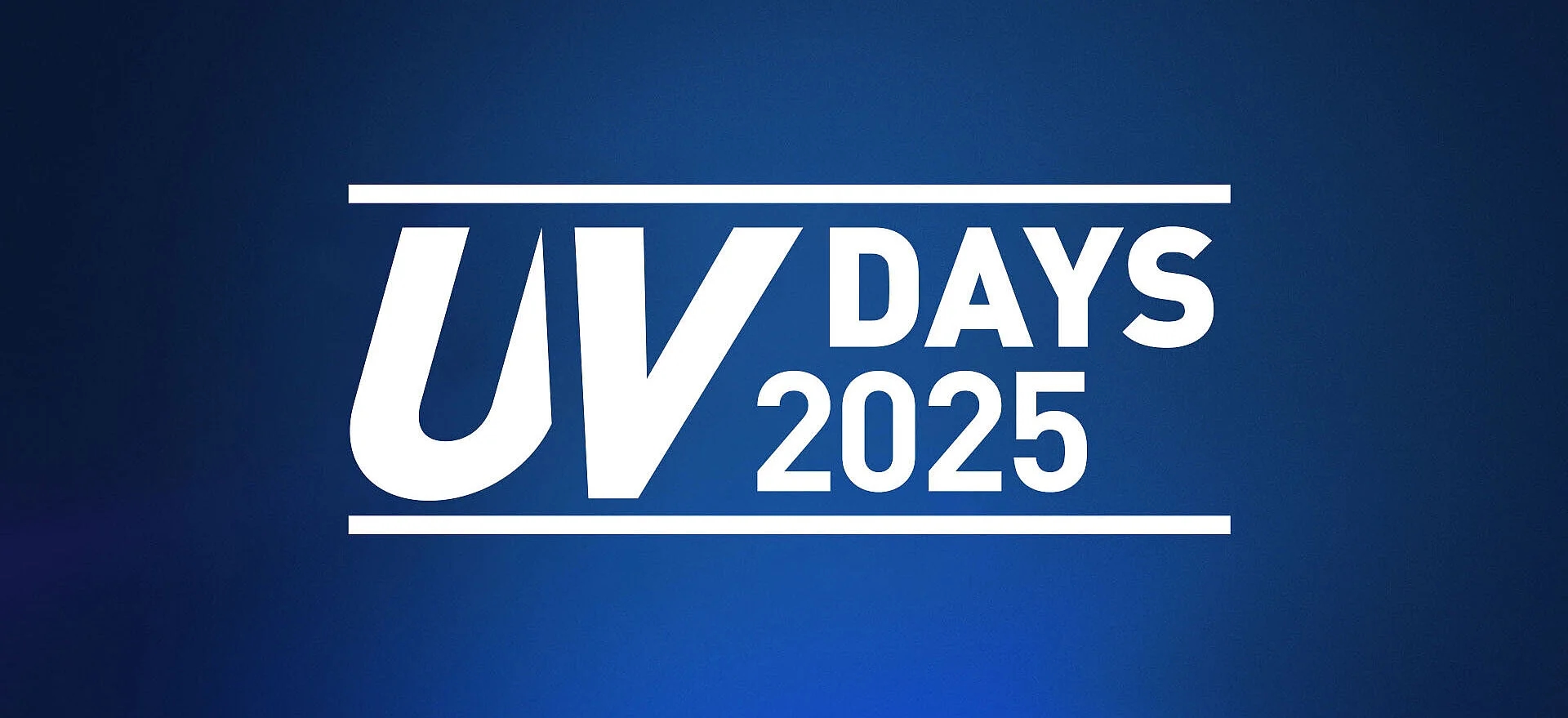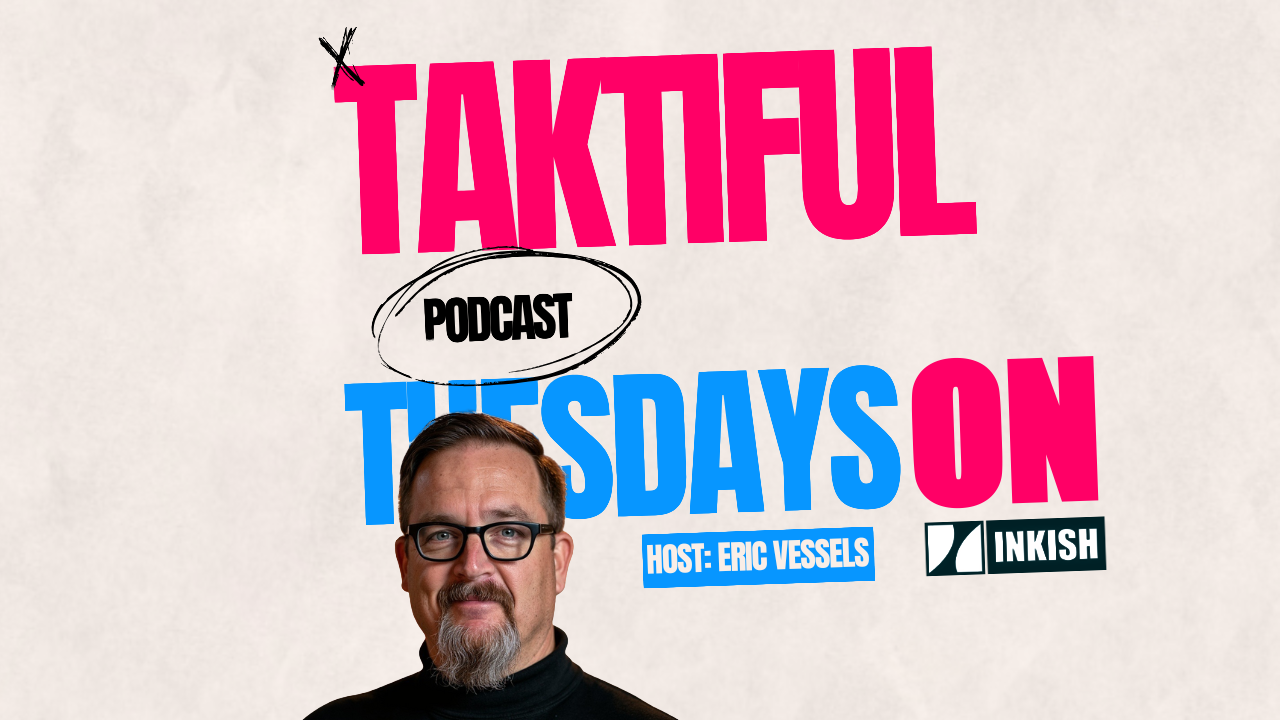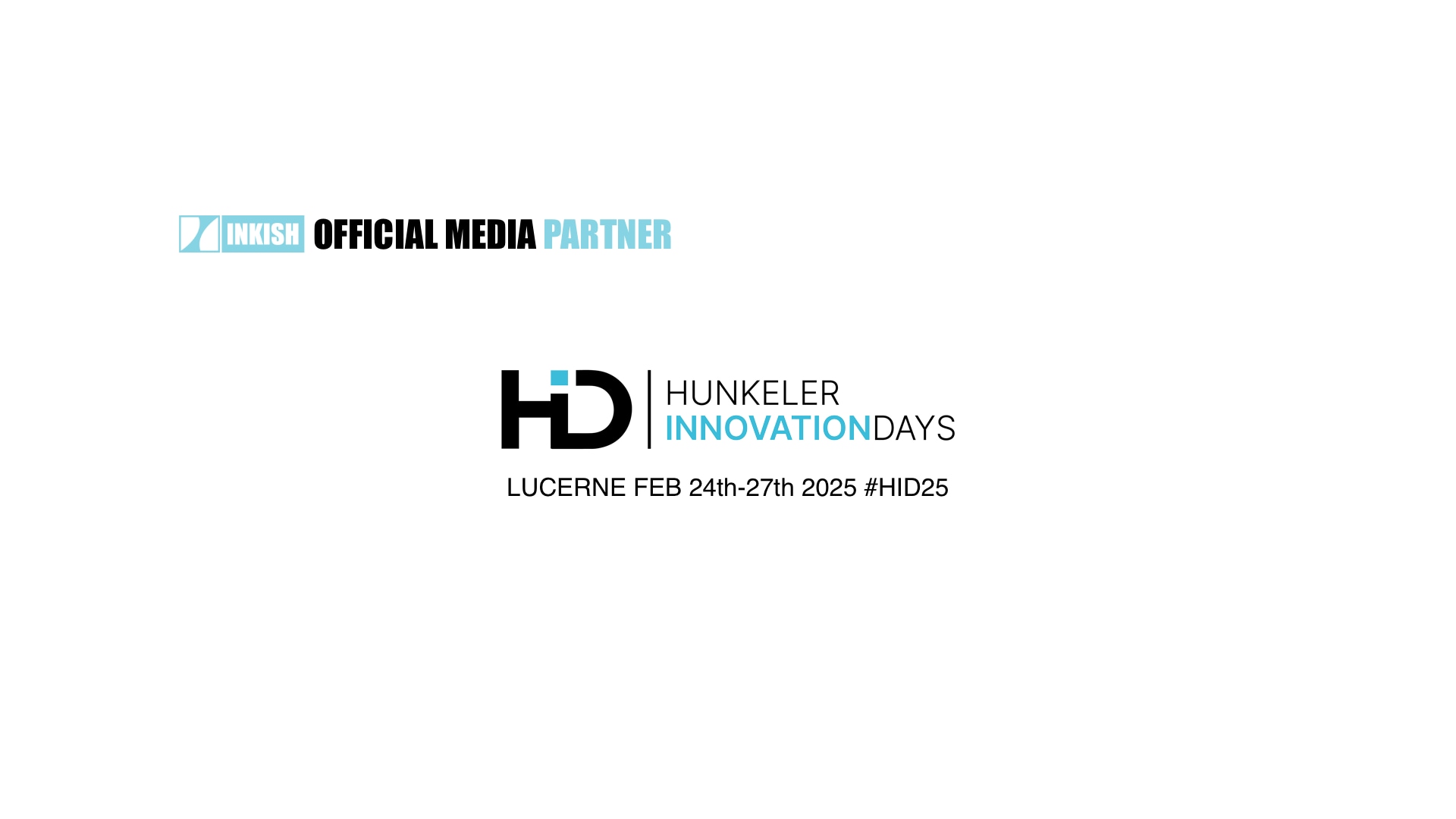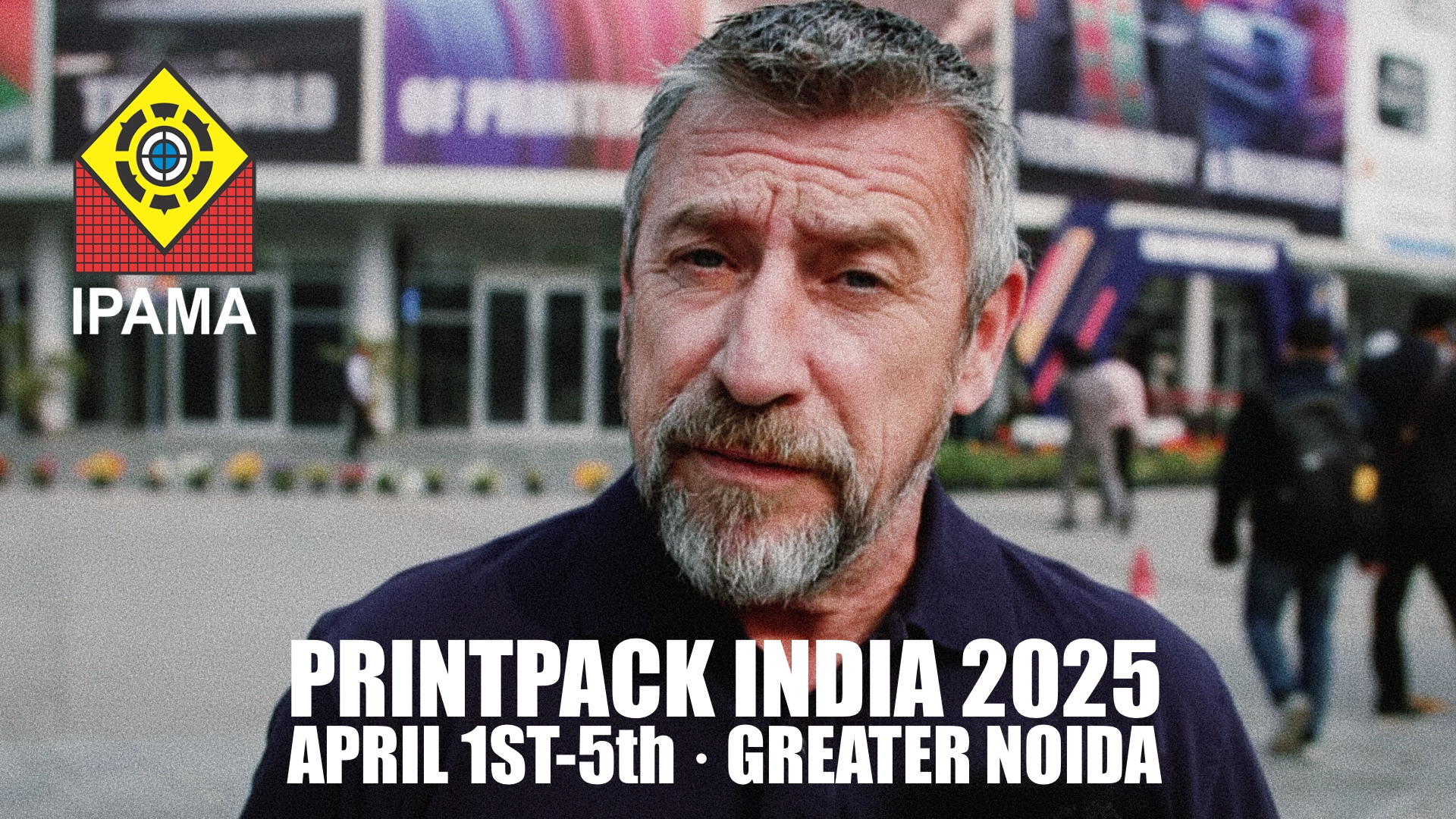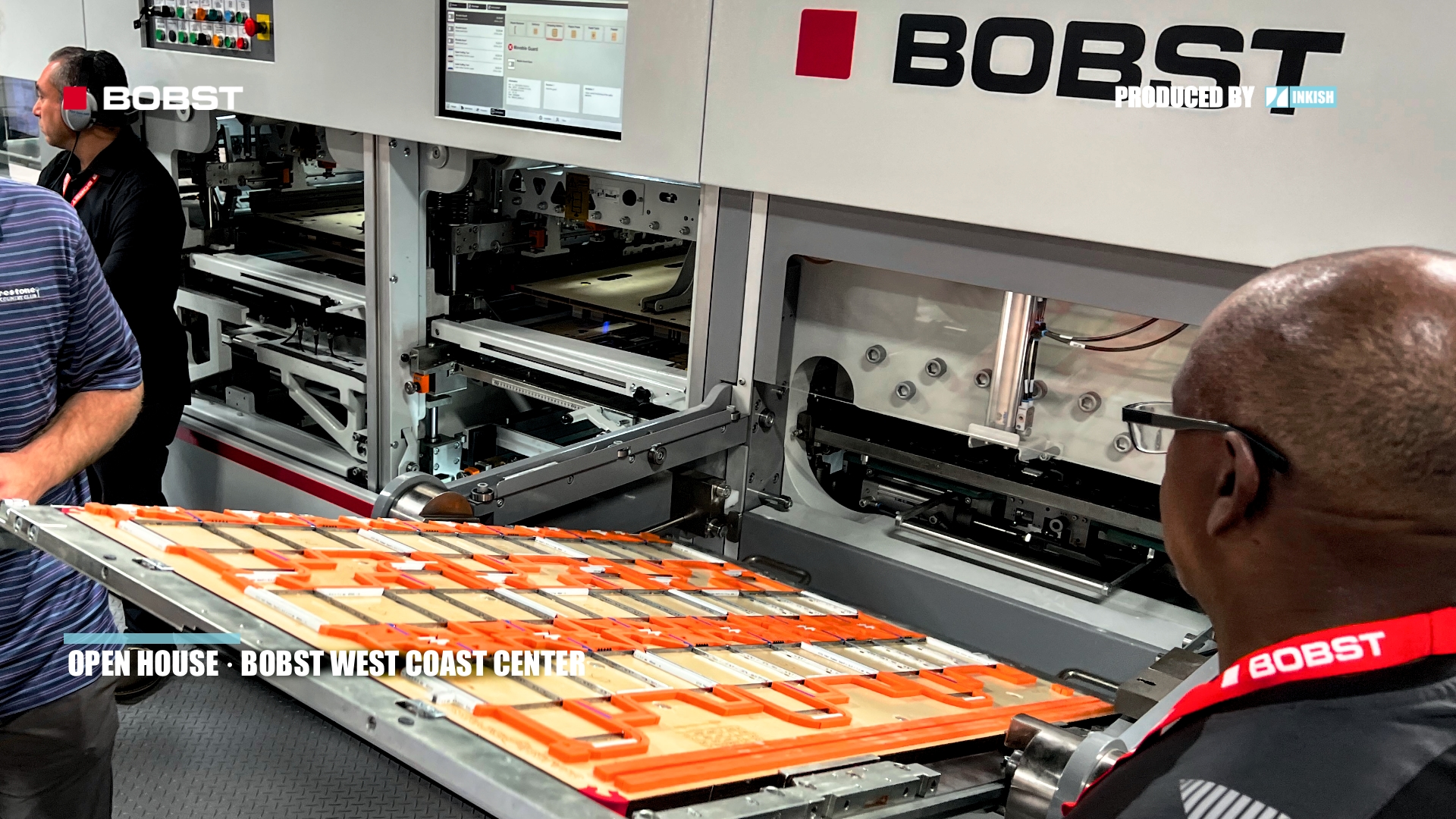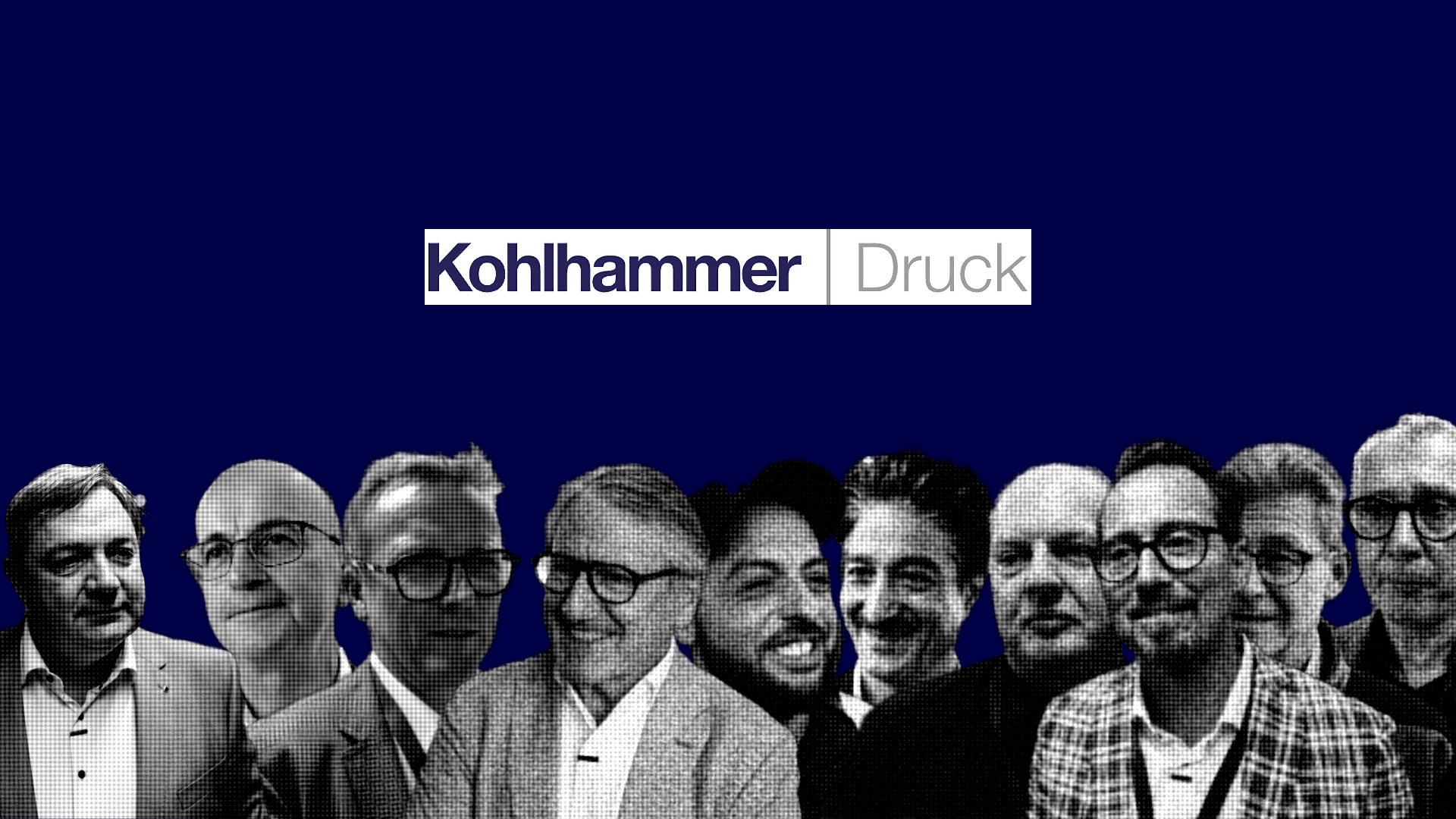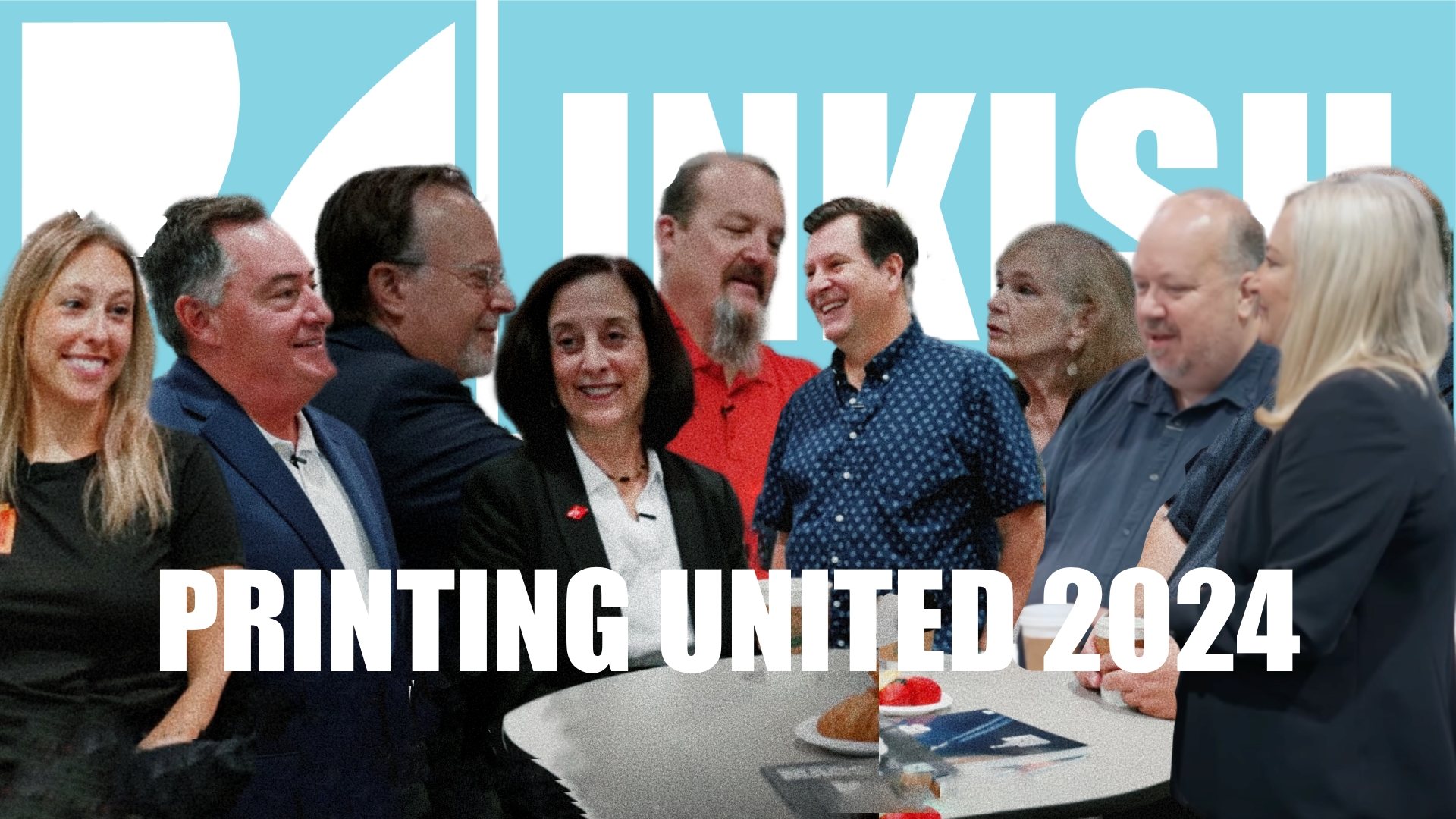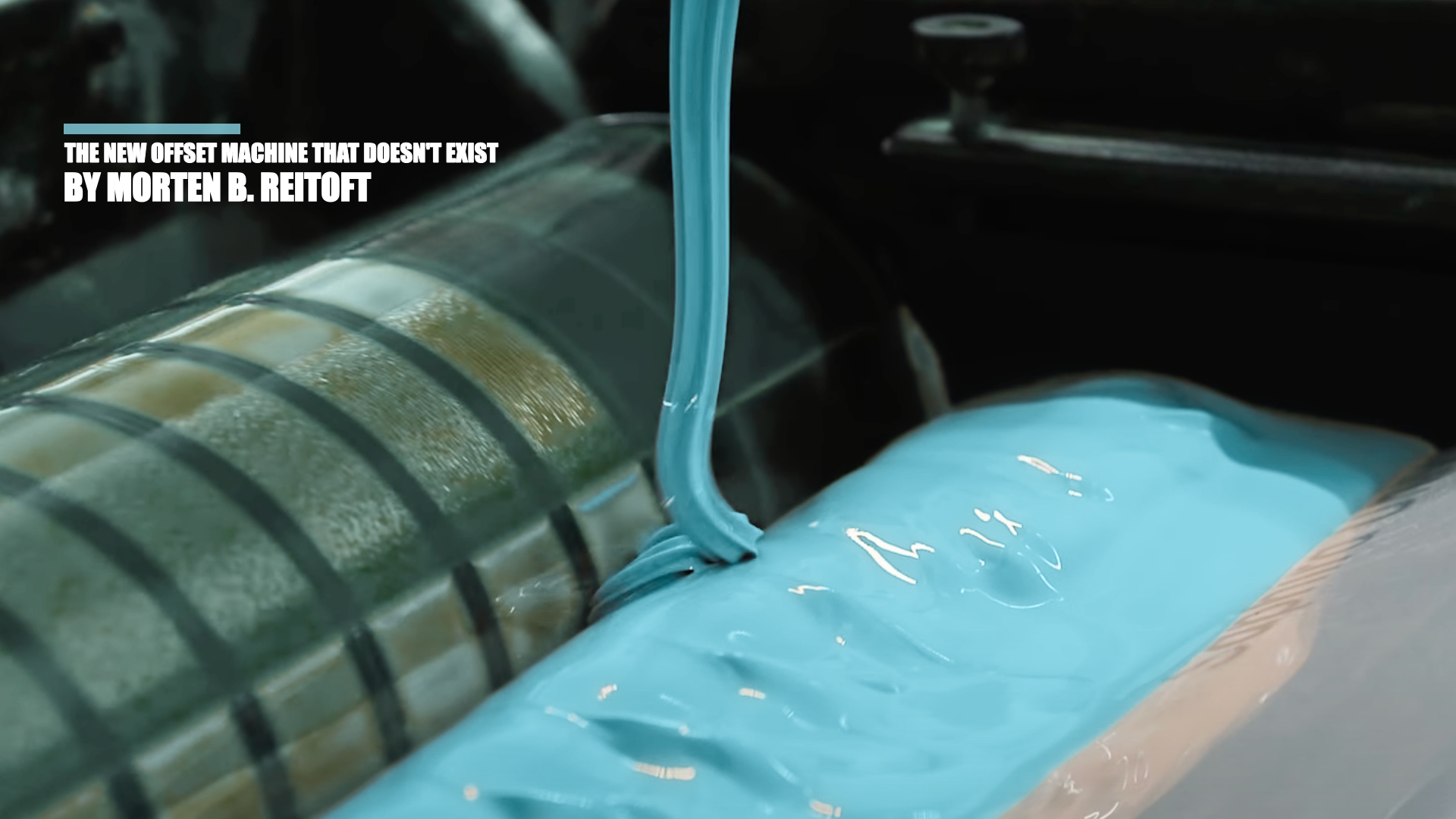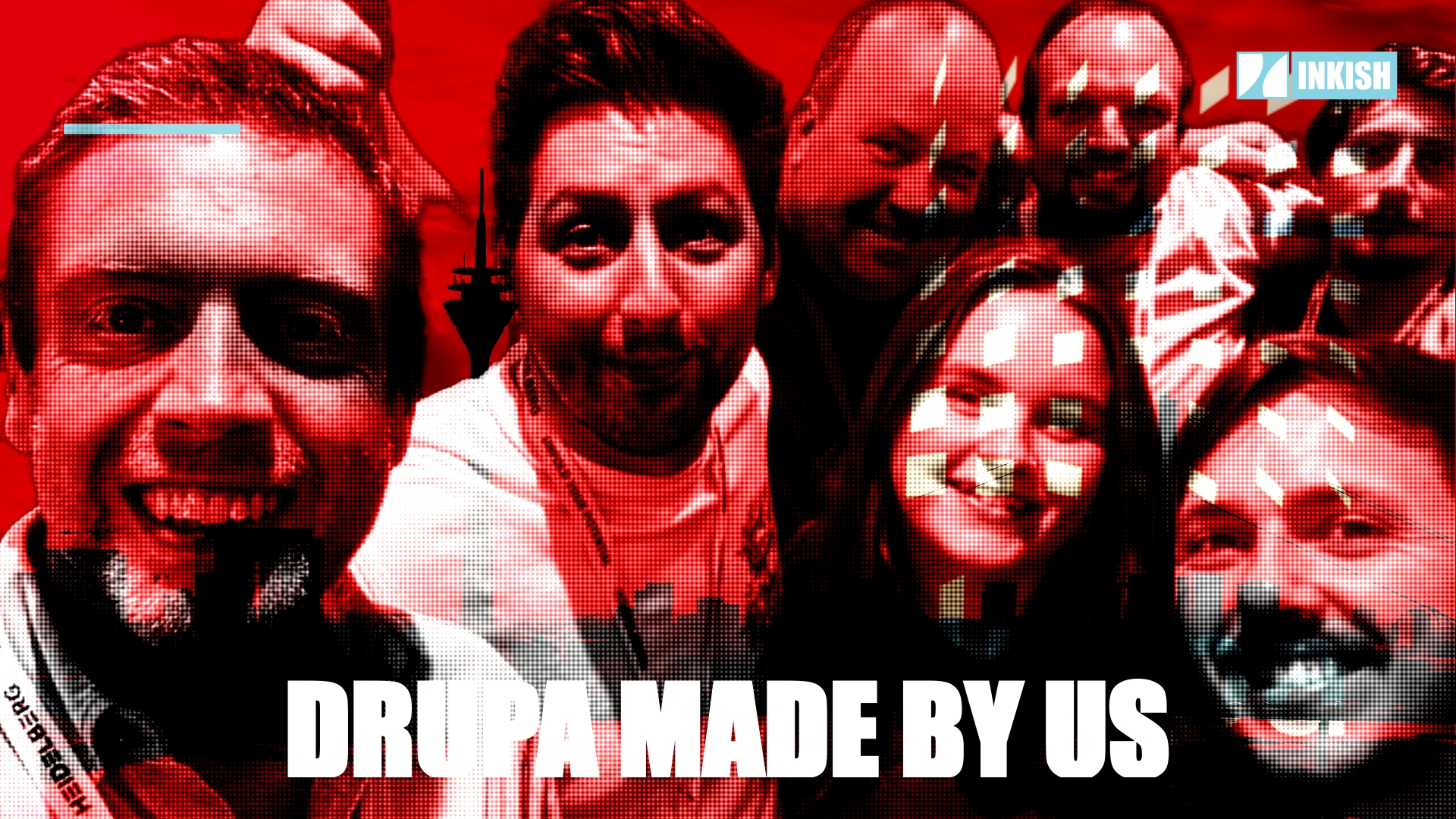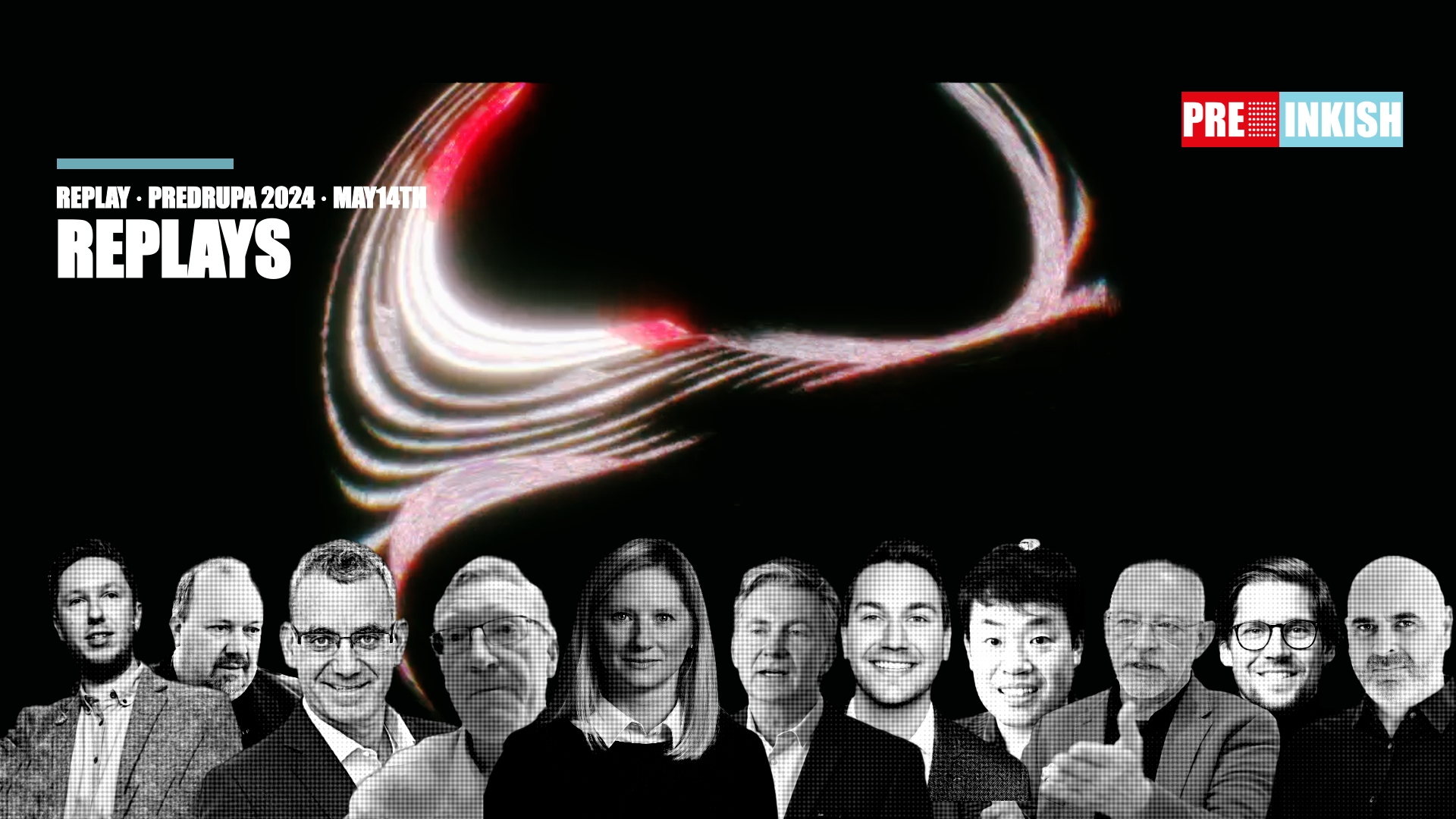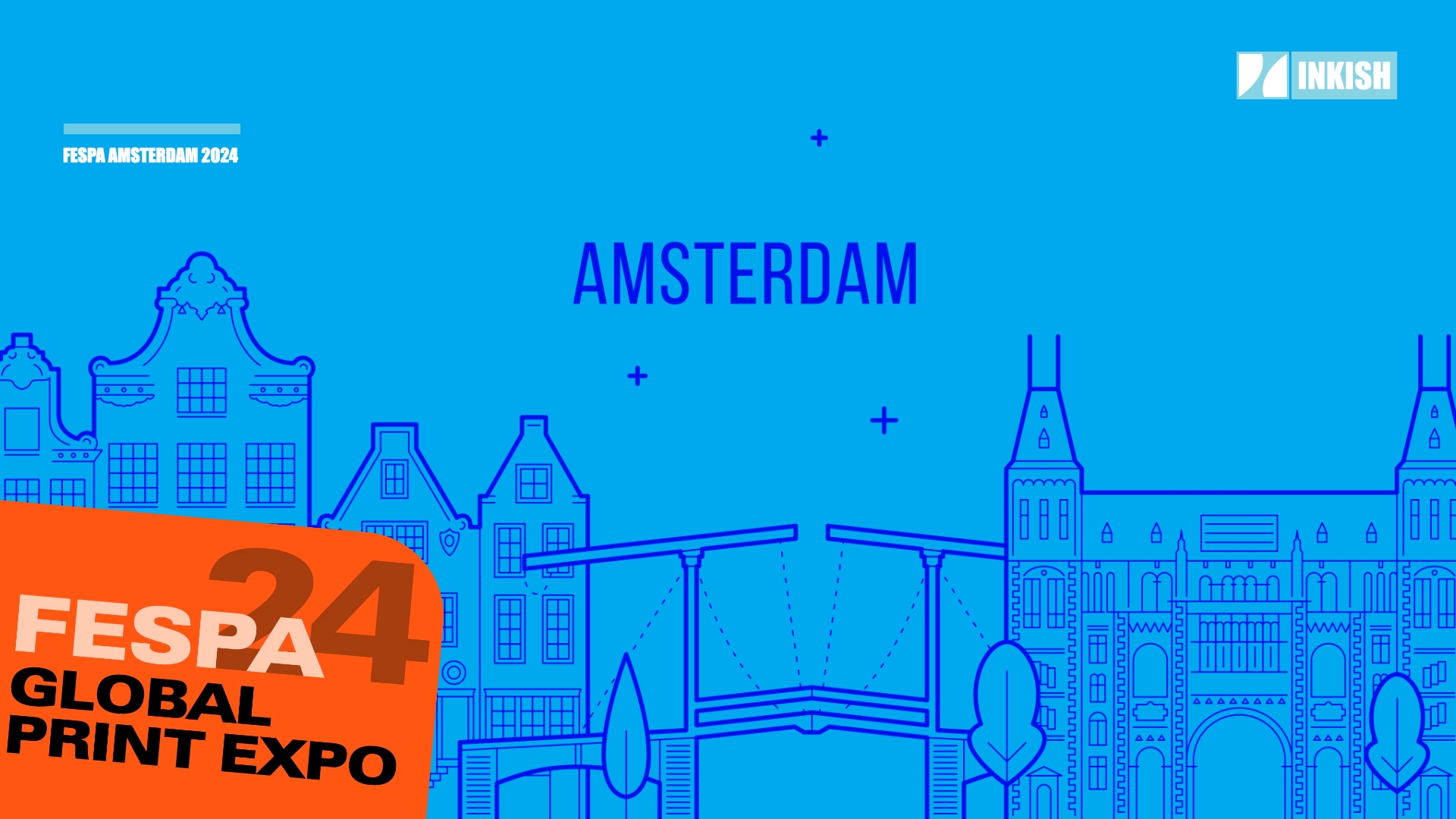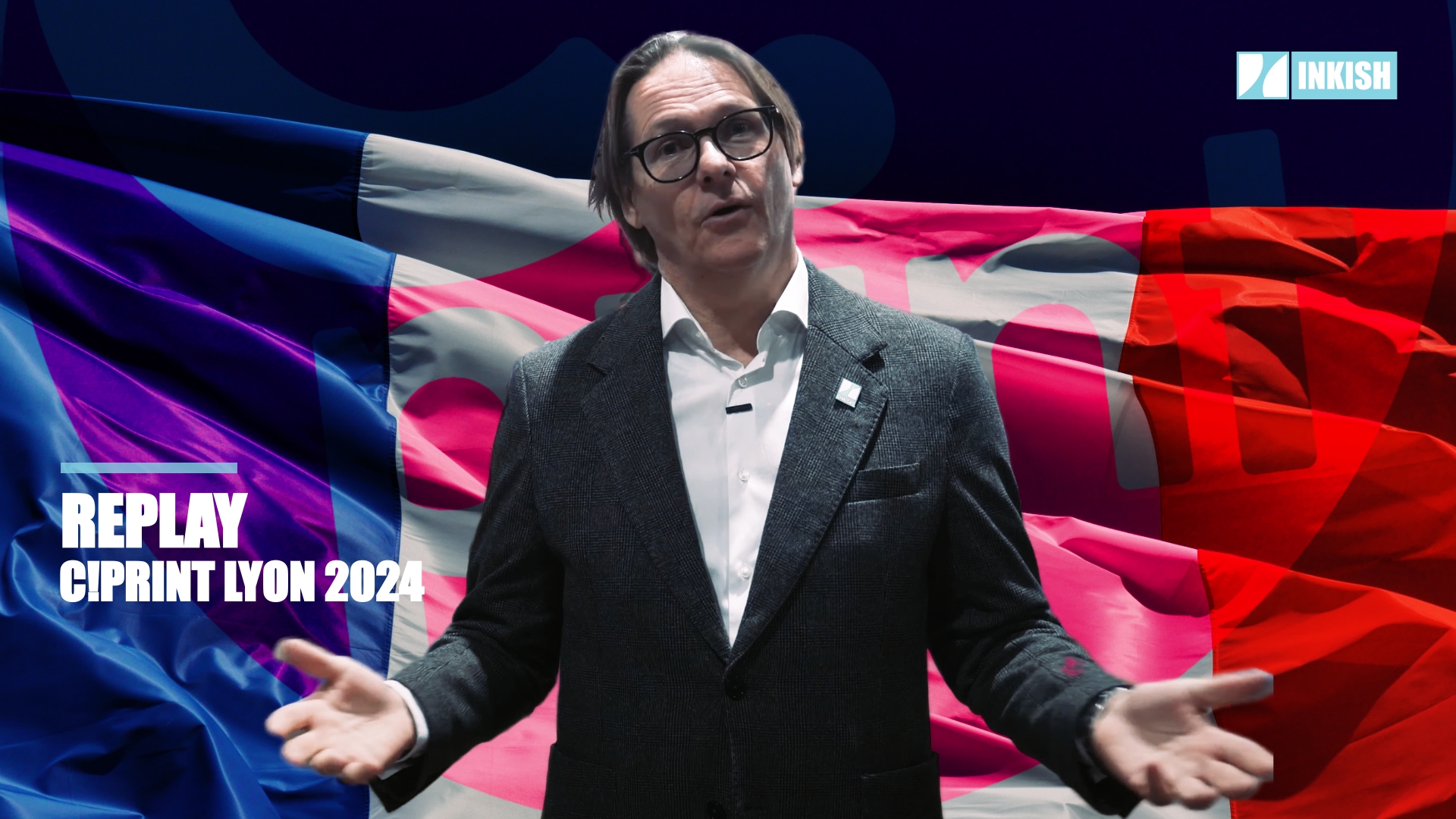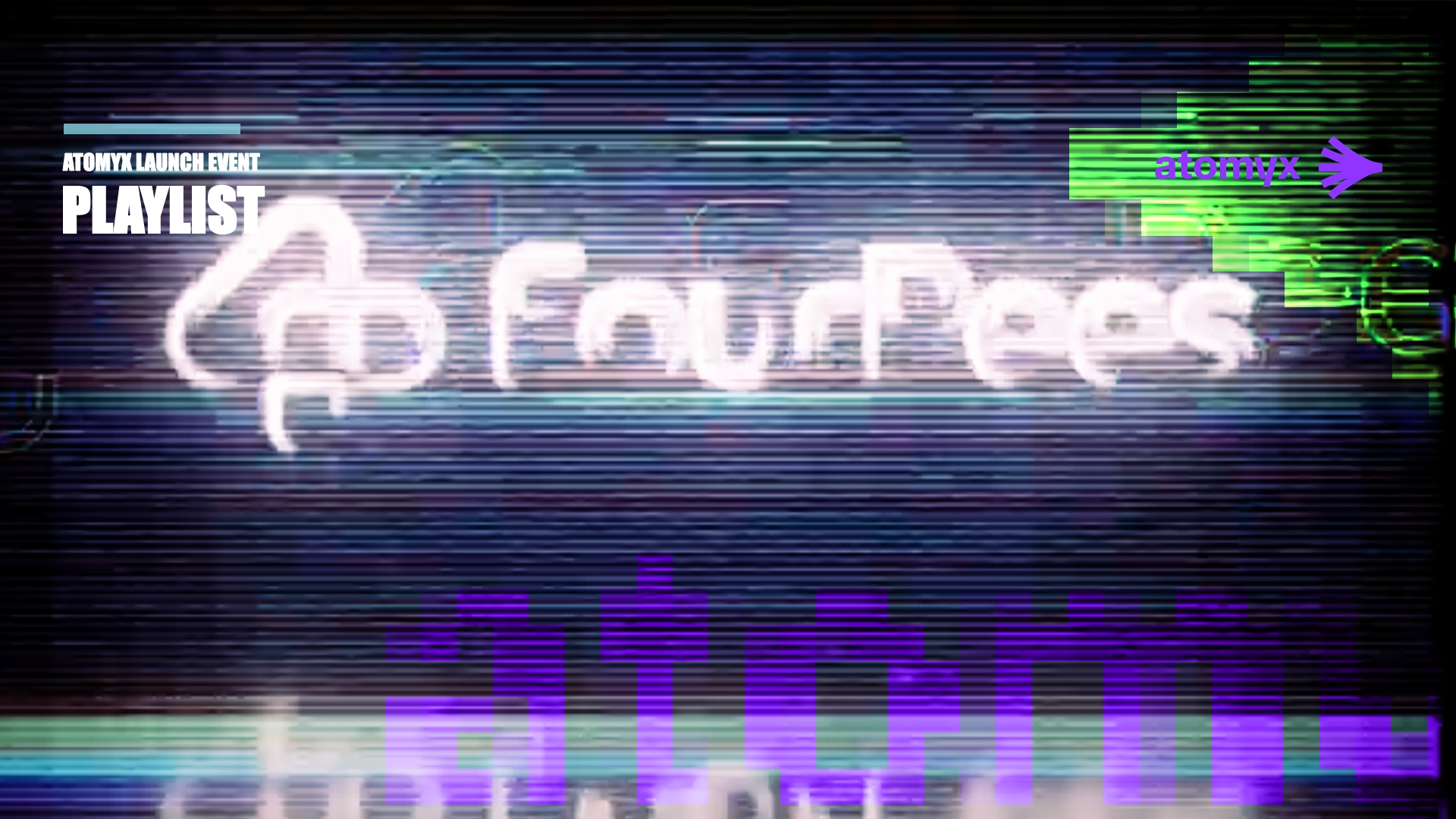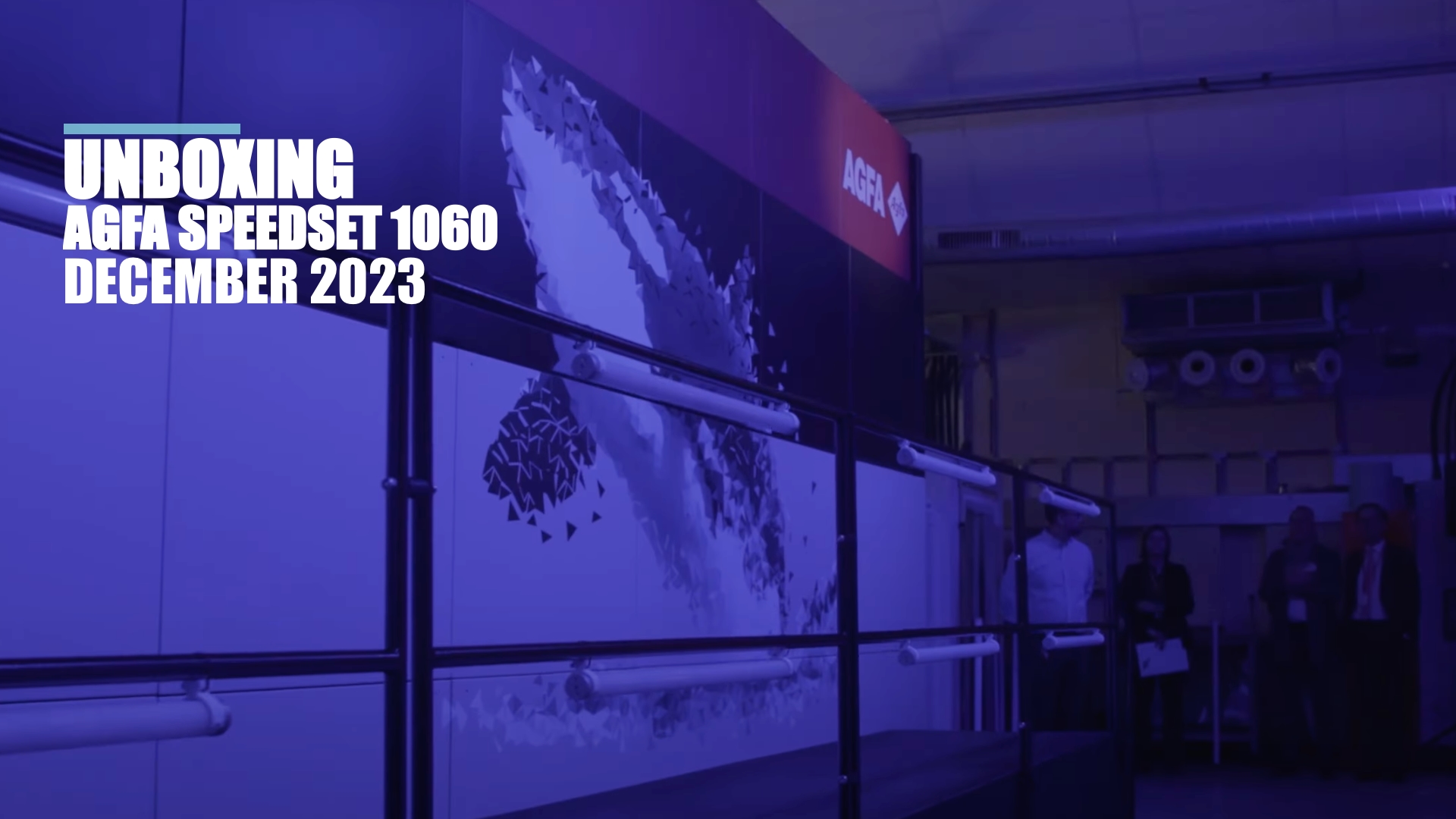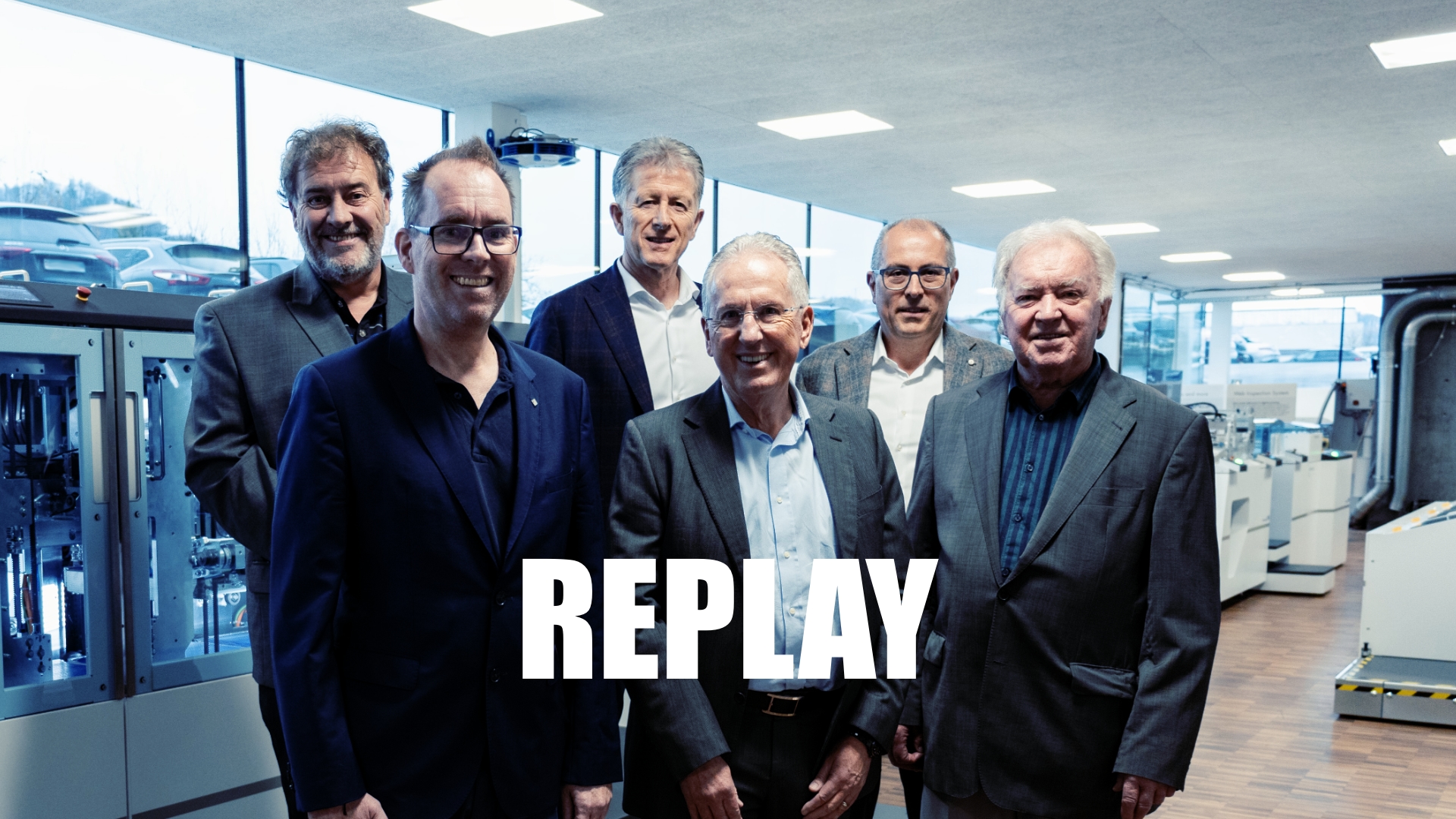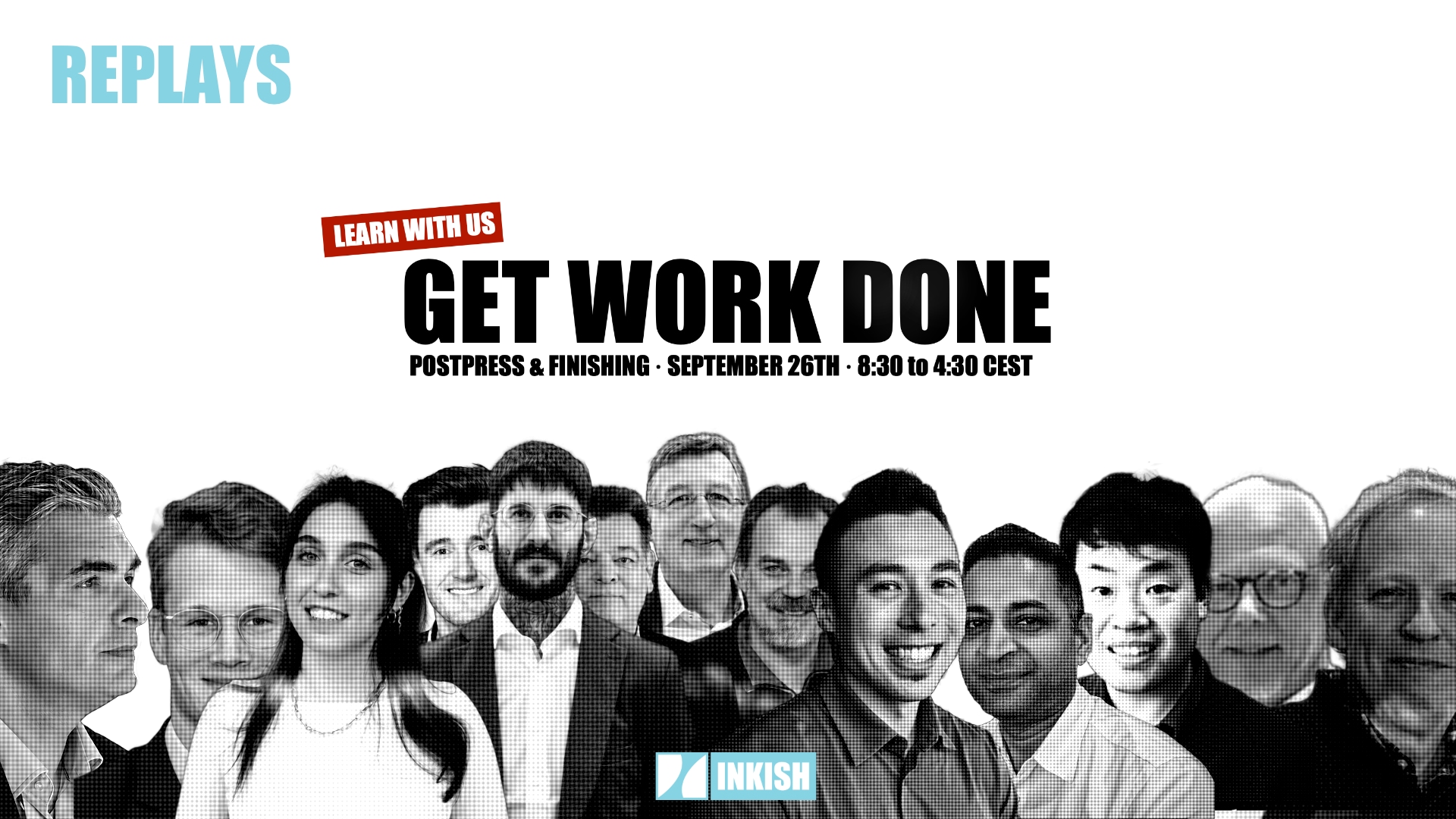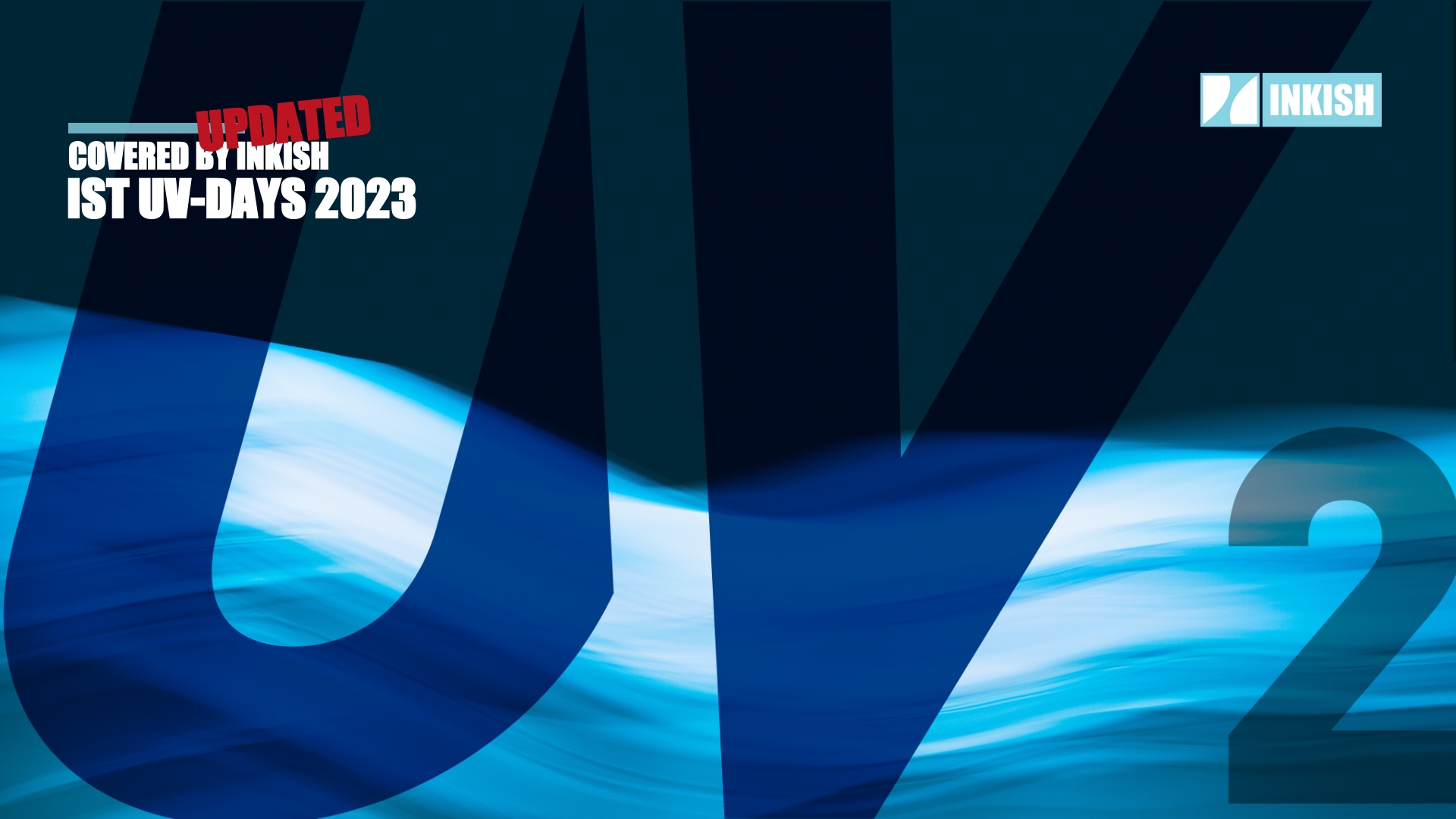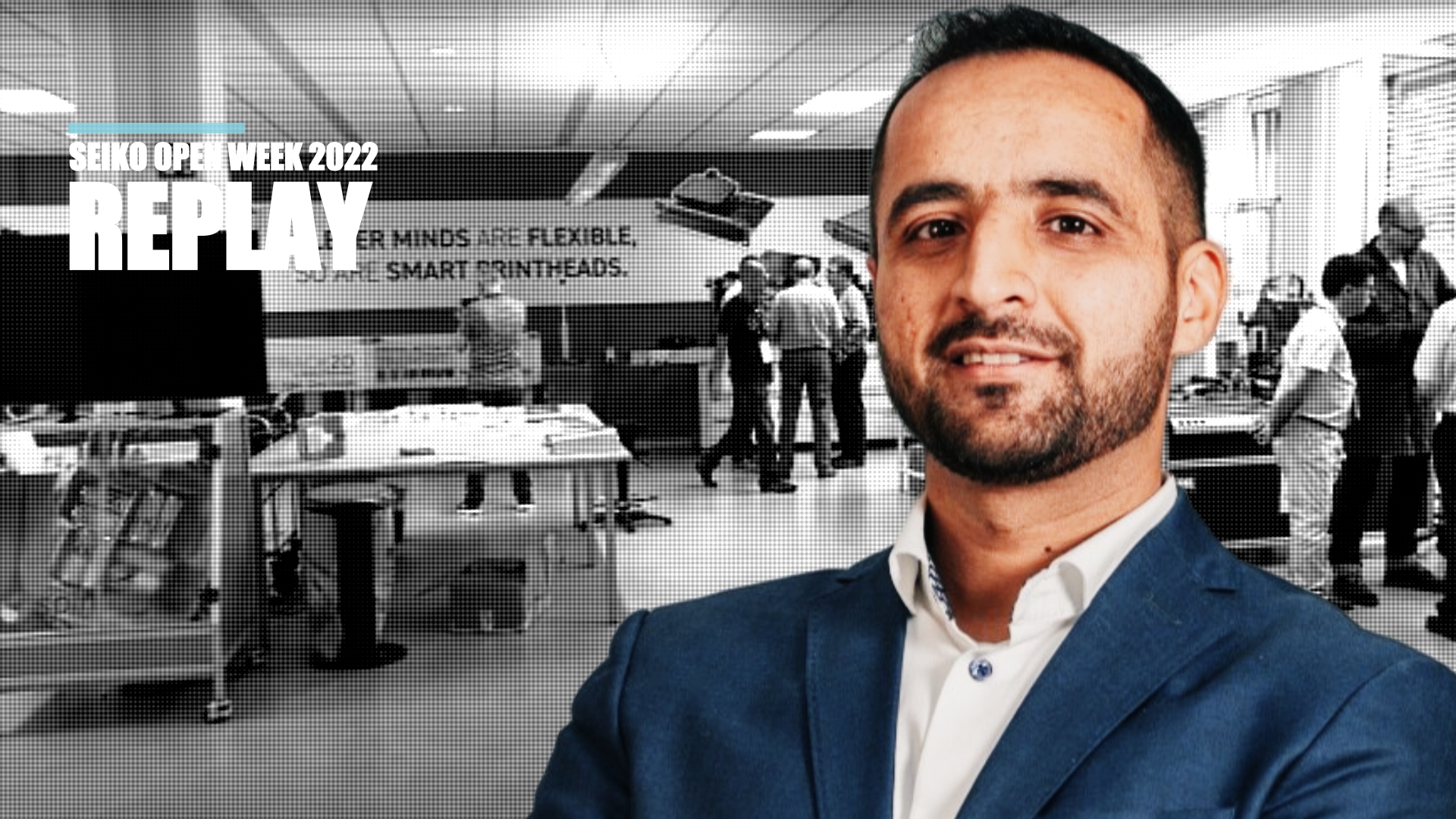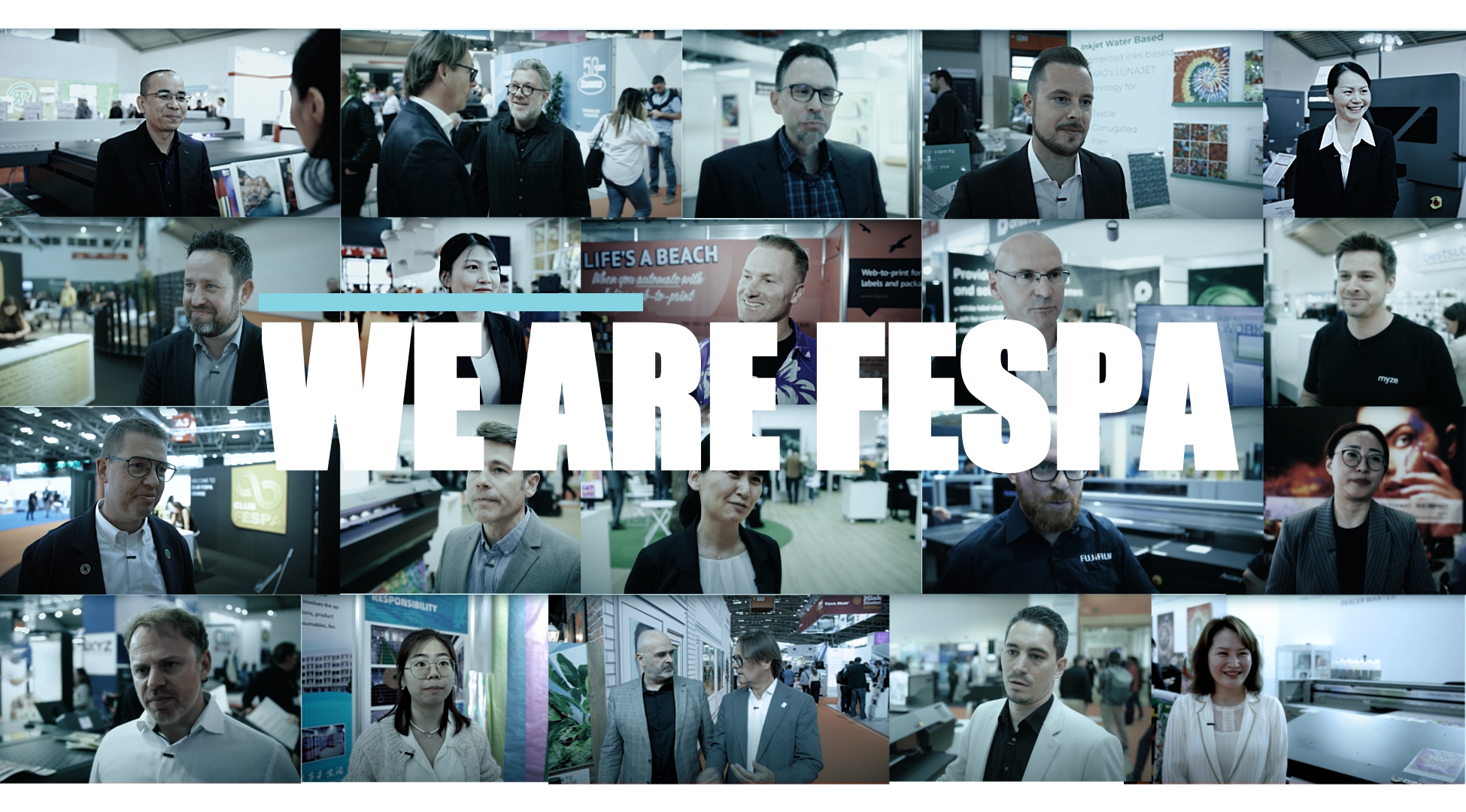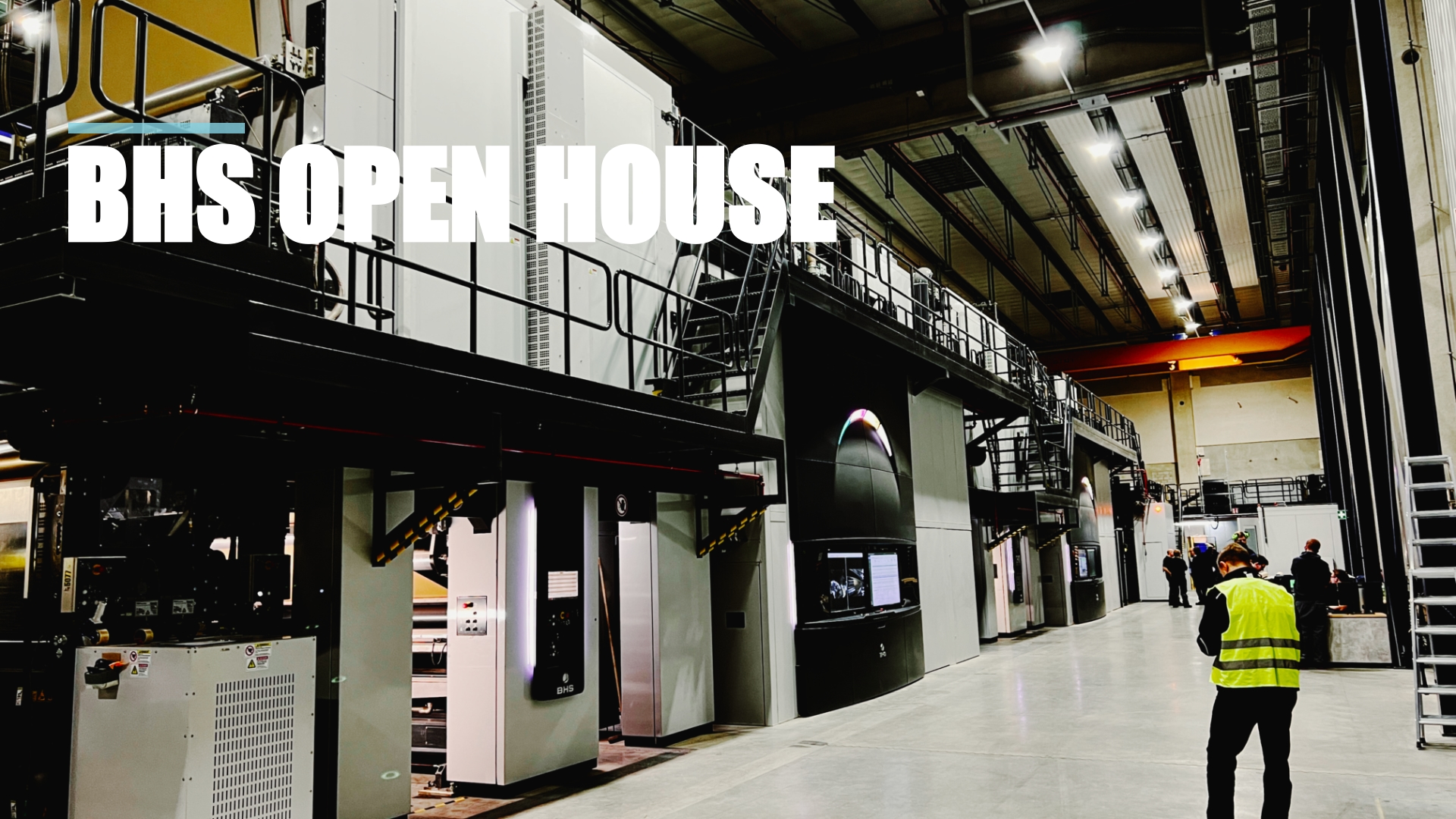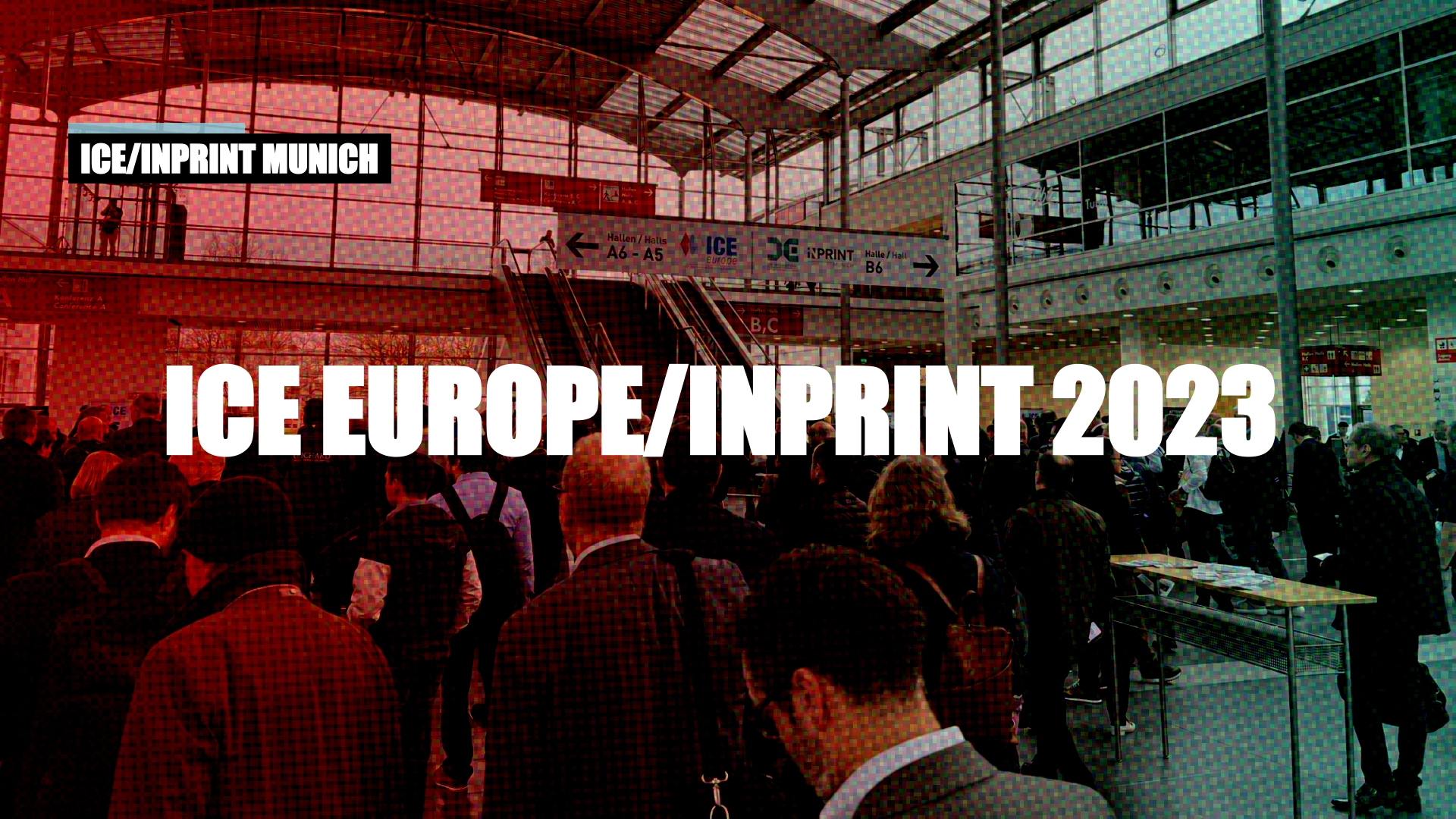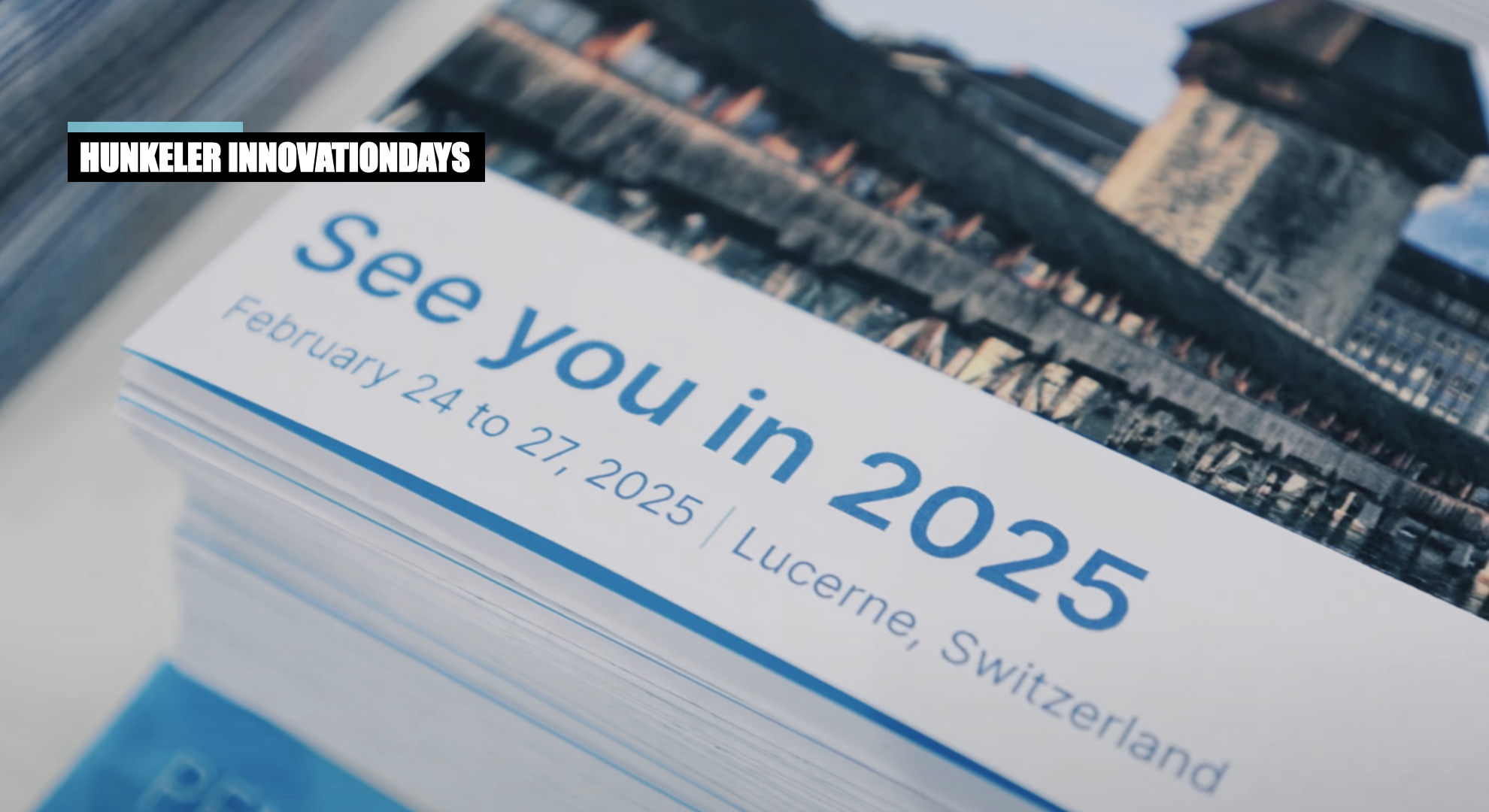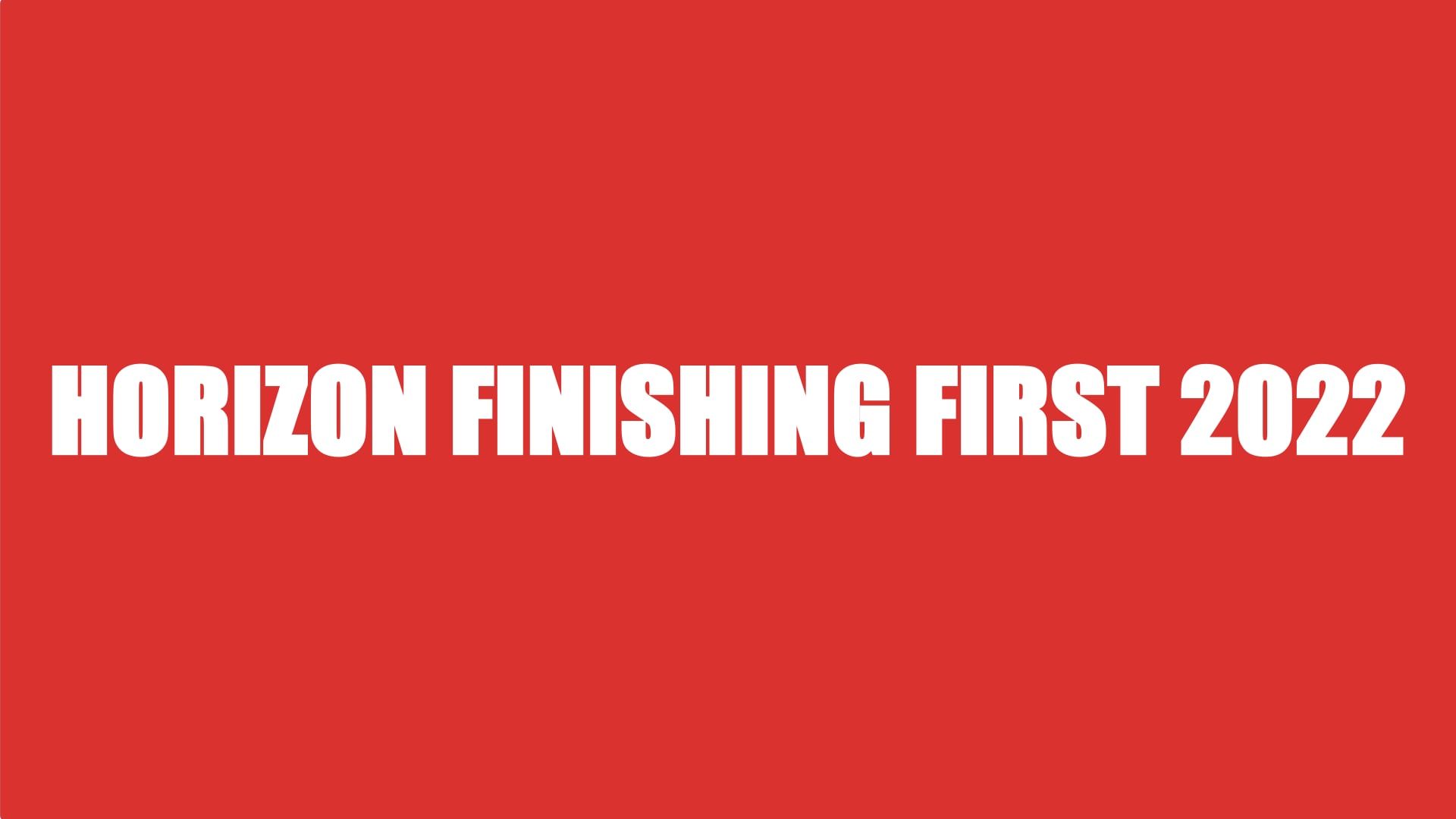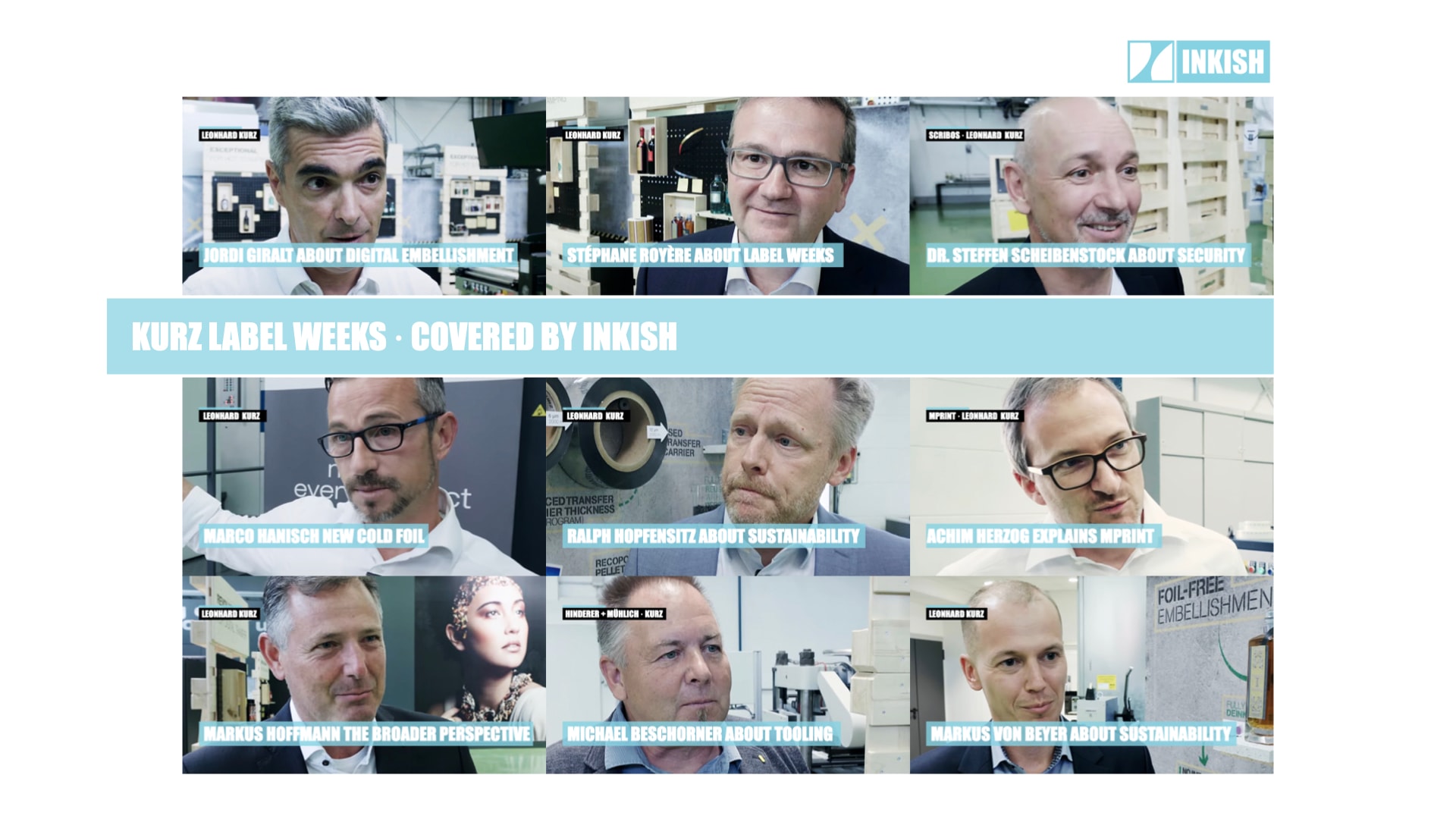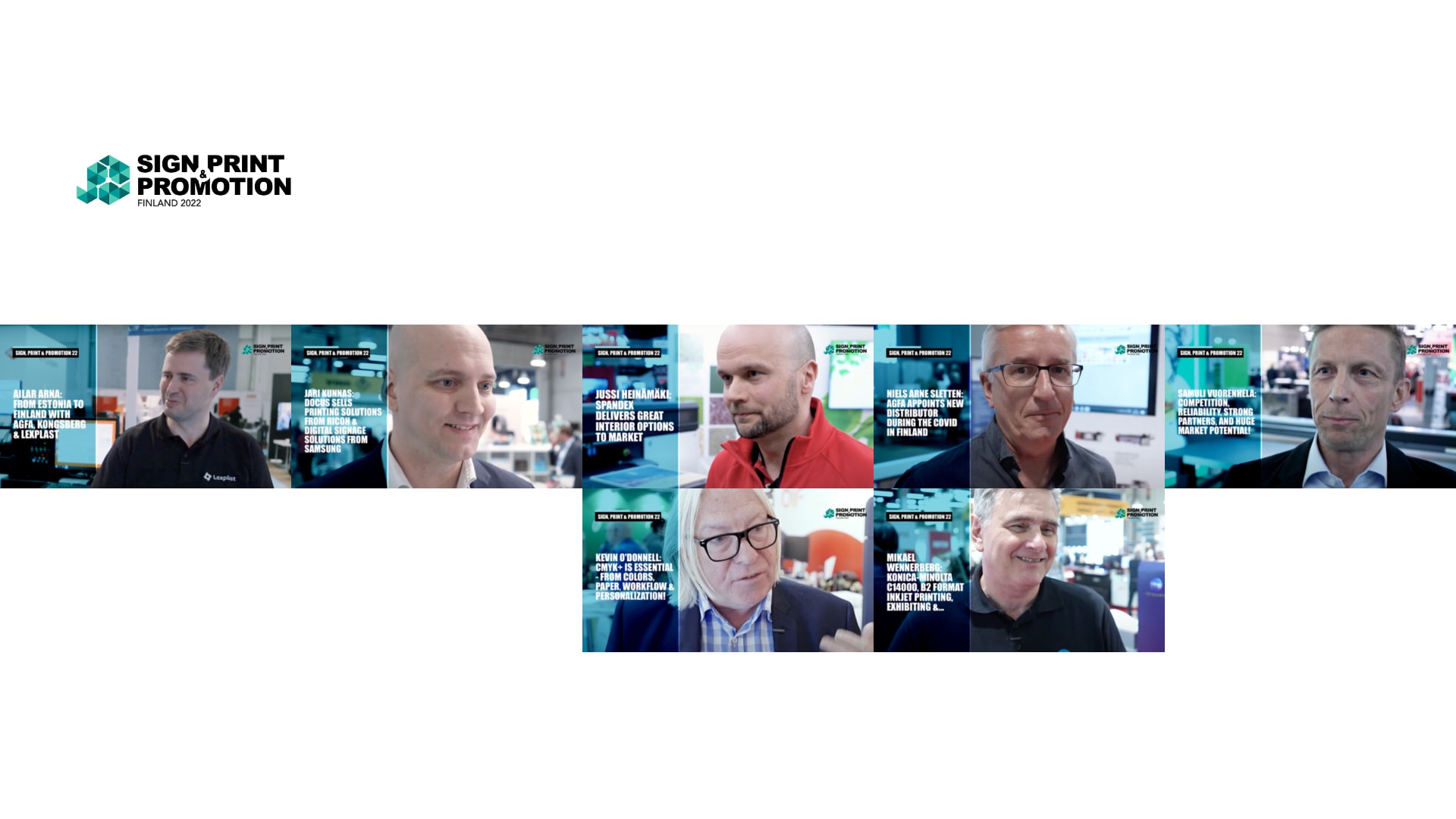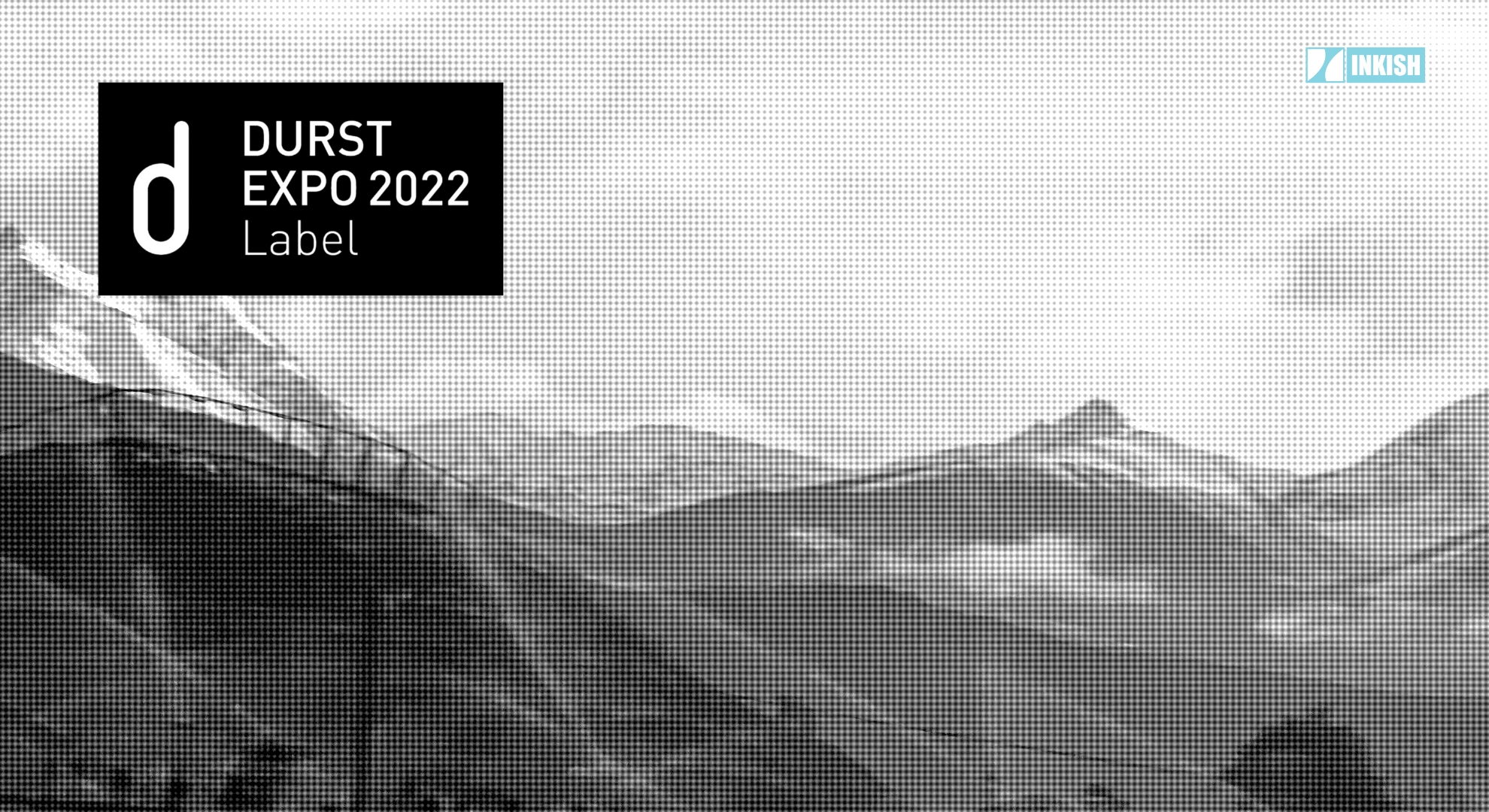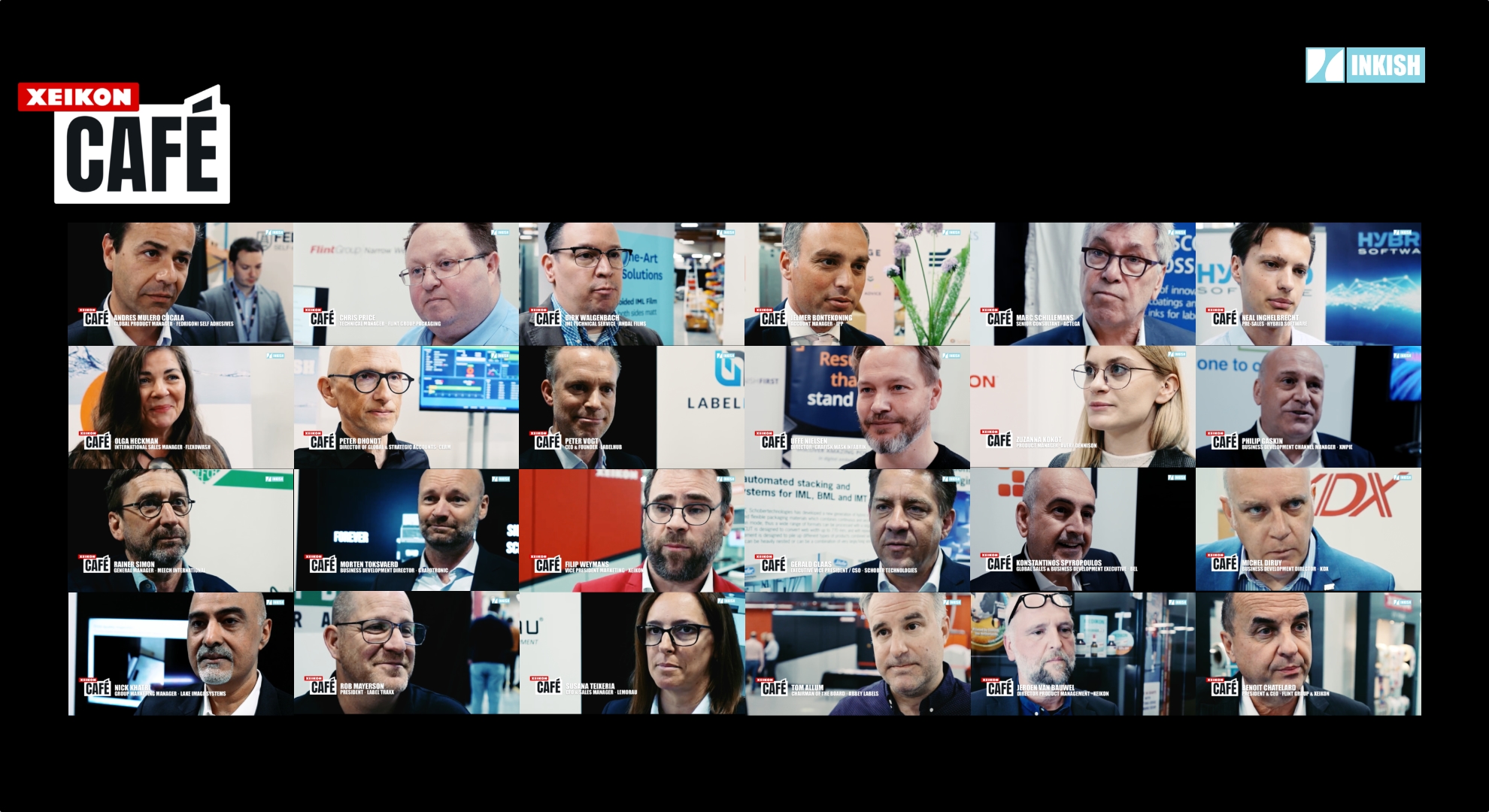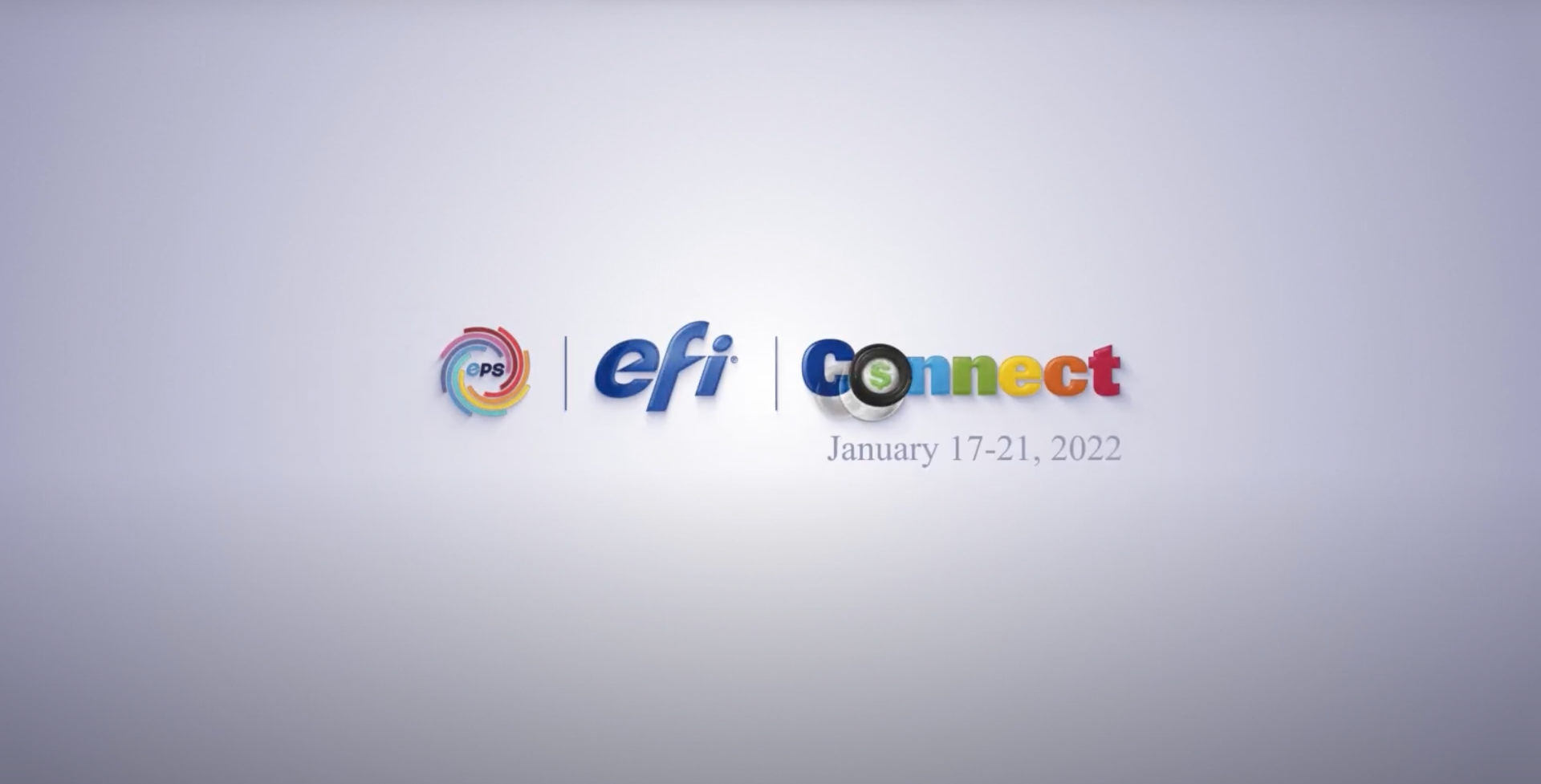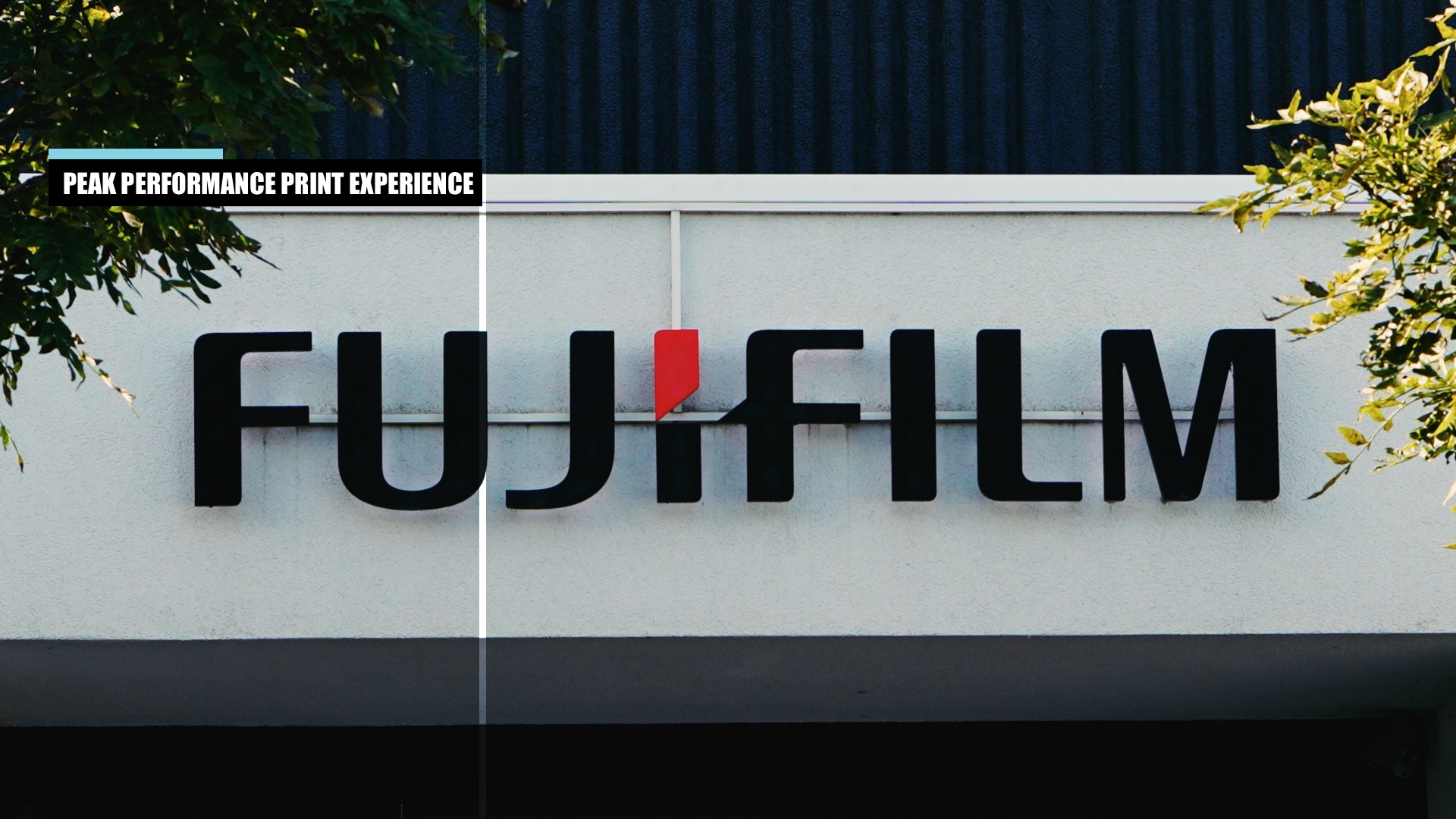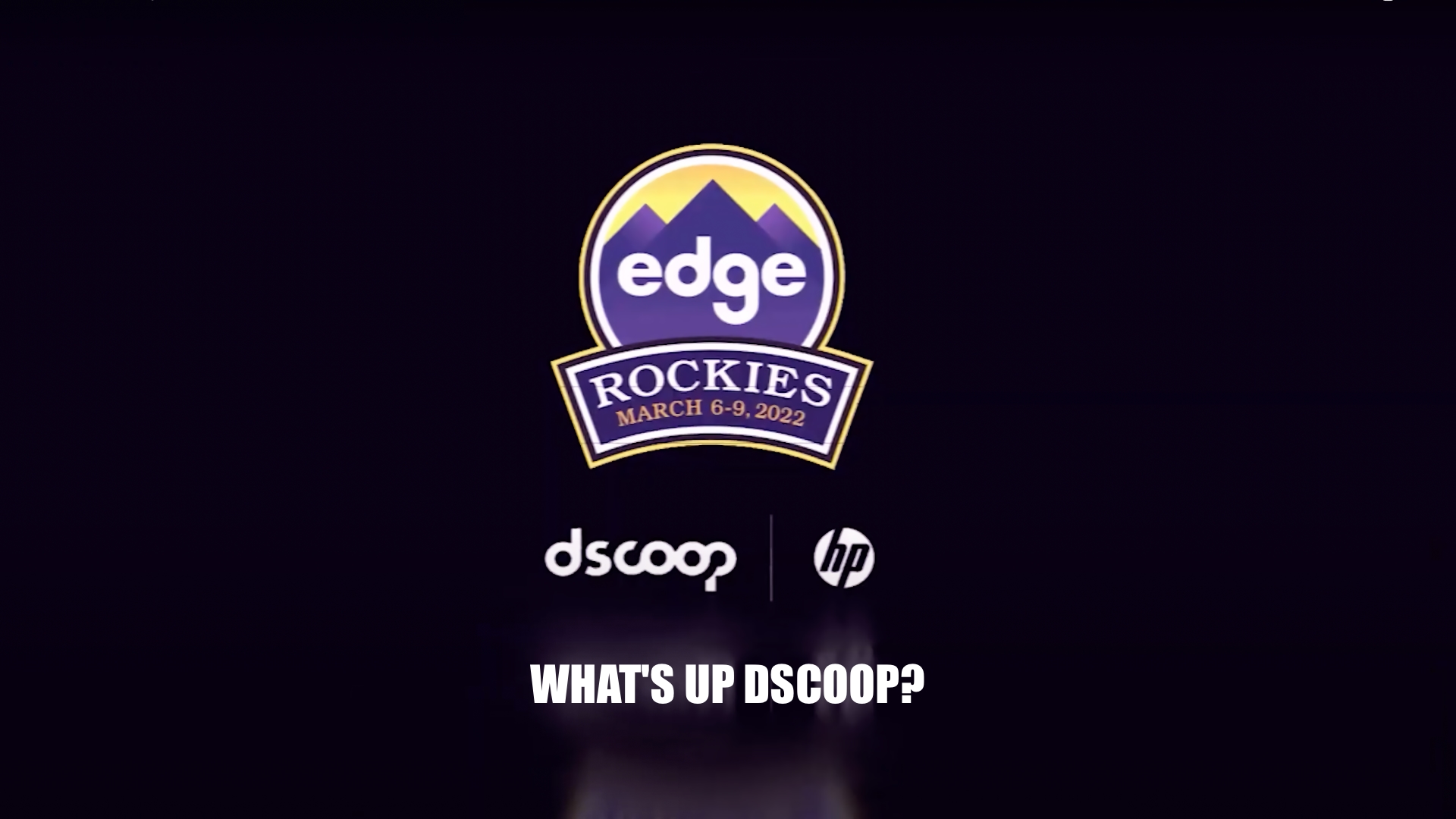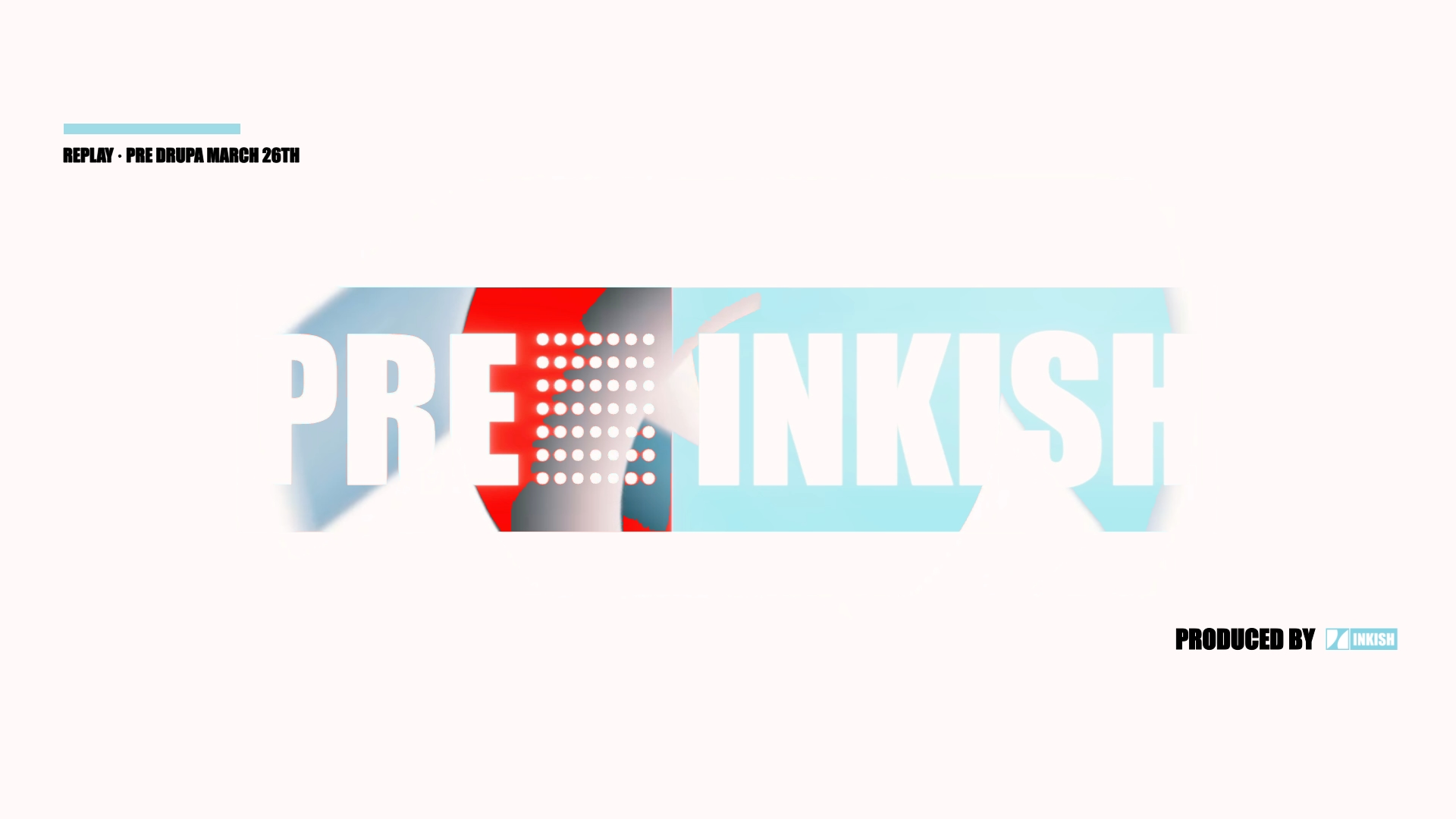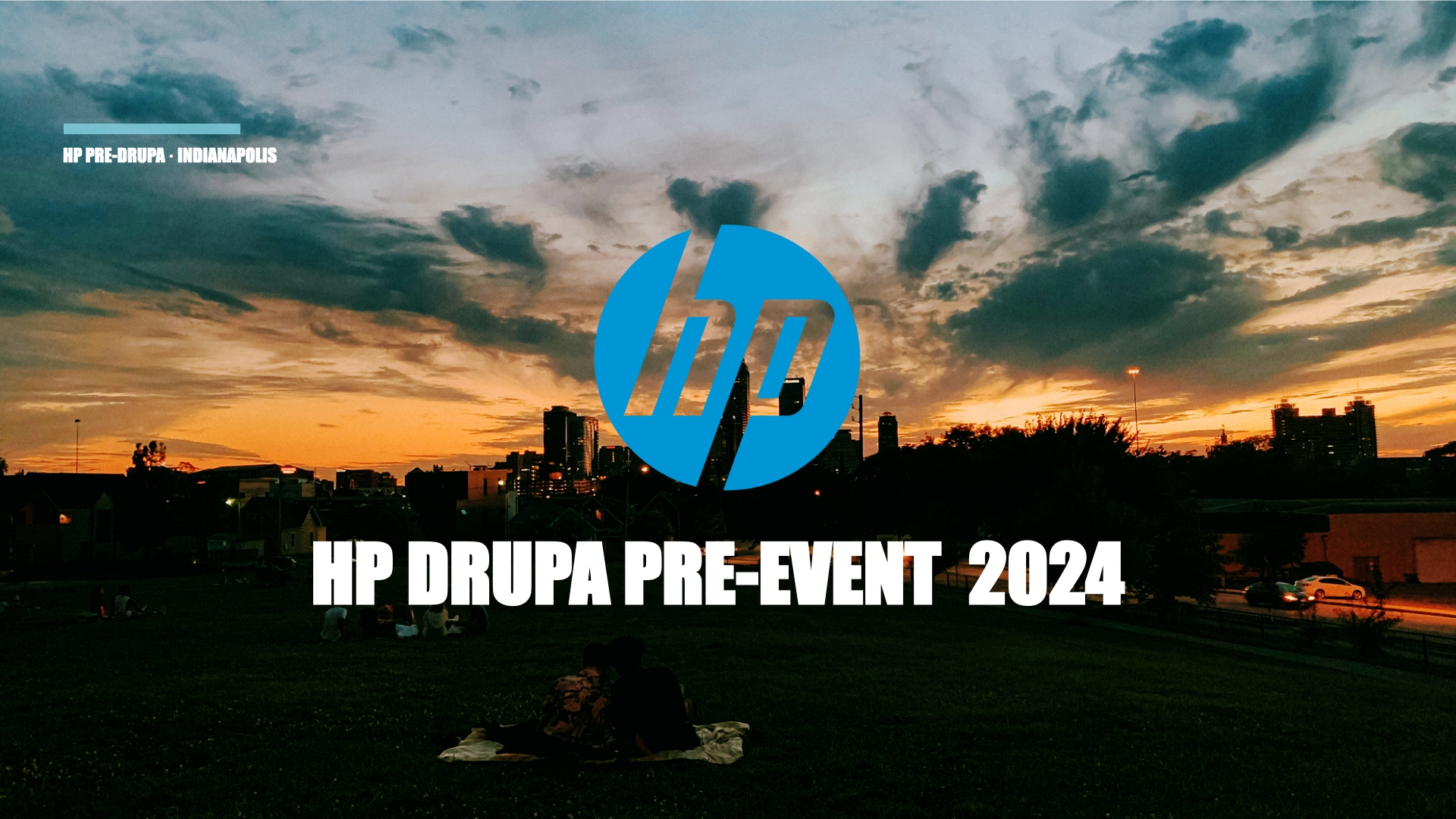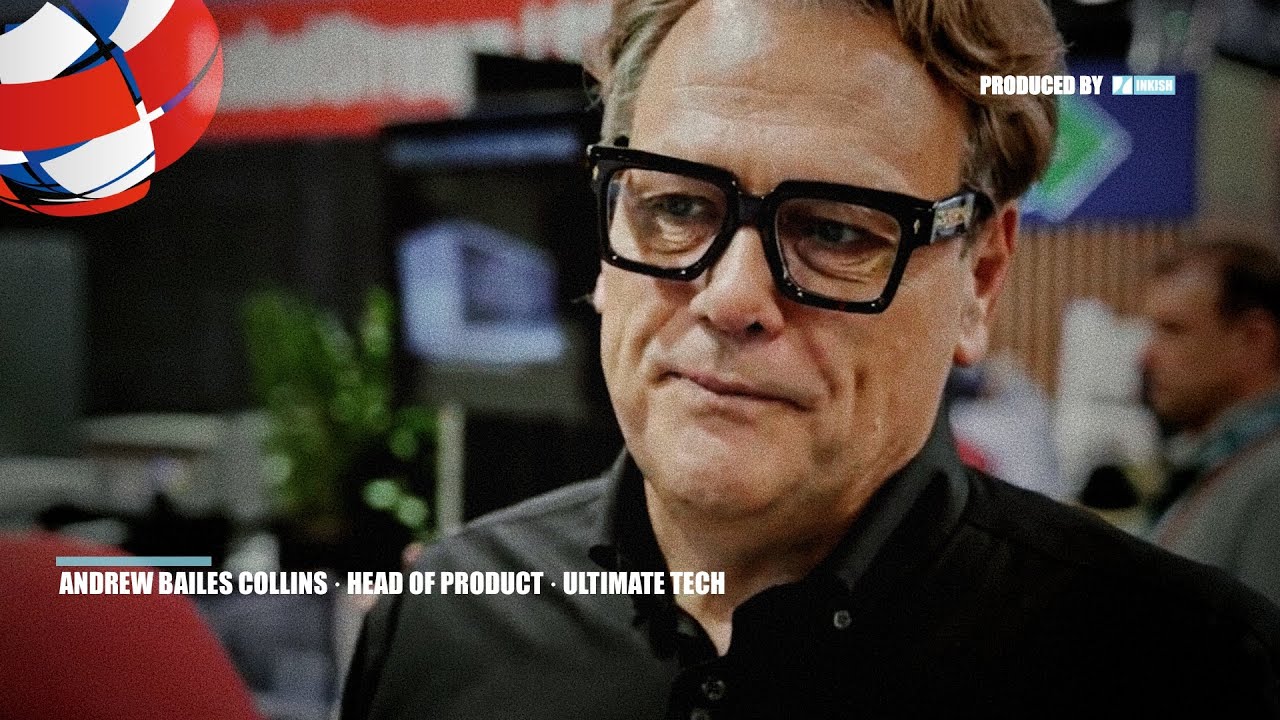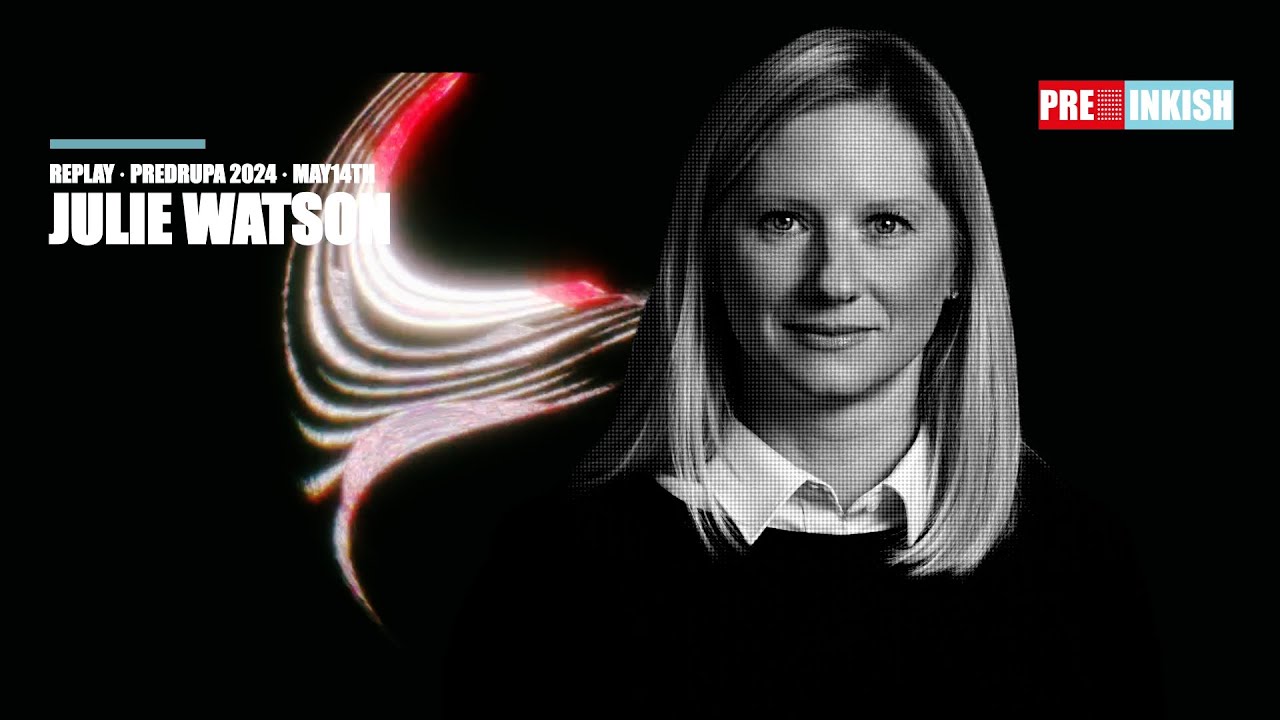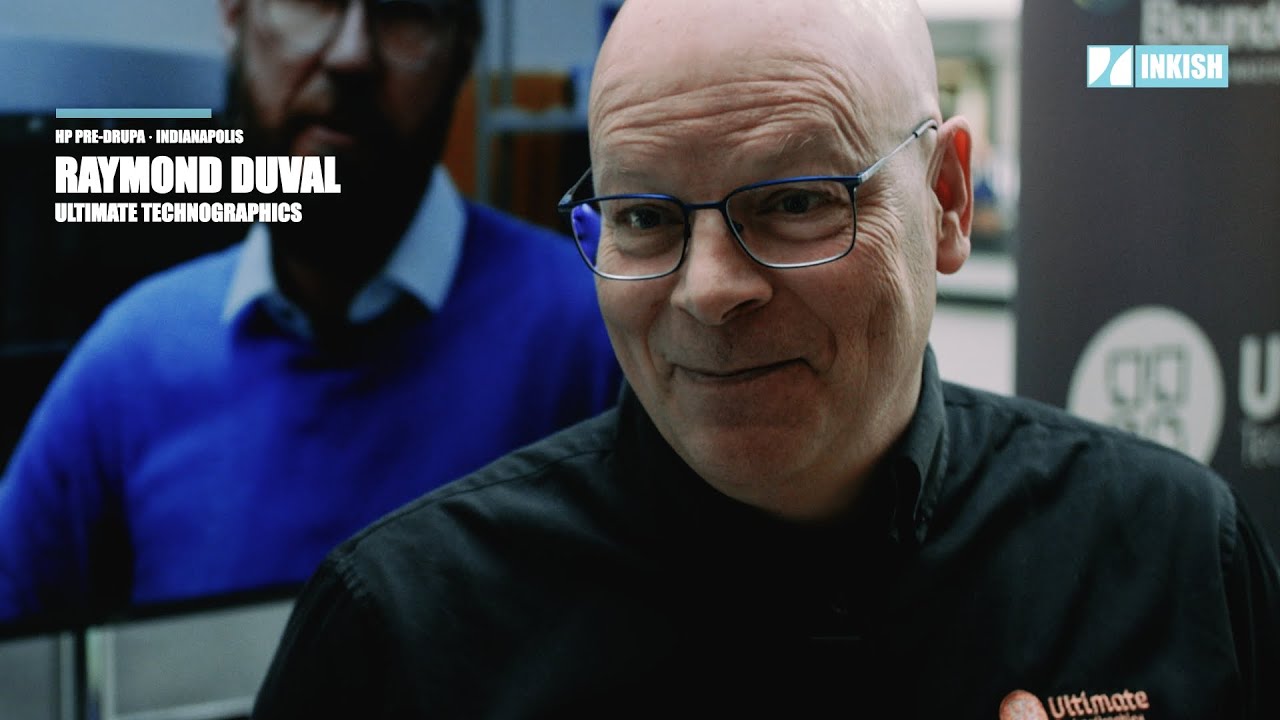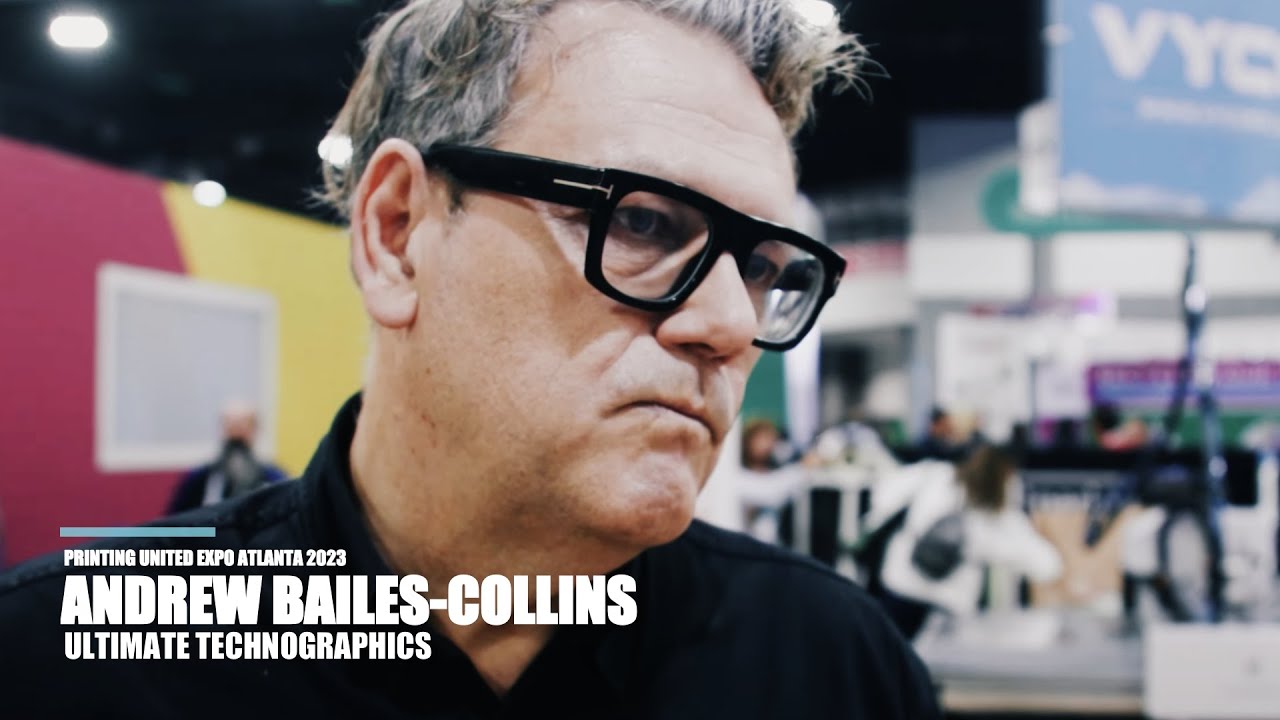Raymond Duval · Over The Skype · Ultimate TechnoGraphic
Ultimate TechnoGraphics is a Canadian based software company known for Impostrip and software within workflow/automation. In this, Over the Skype conversation editor, Morten Reitoft talks to Raymond Duval about workflow/automation, the market potentials, and what drives the decisions to invest in workflow/automation solutions.
As with all our ‘Over the Skype’ interviews, quality is limited to bandwidth, web-cams, and ability to literally LIVE mix the conversations. However, it works, and with Over the Skype, we will bring you more than 20 exciting people, and angles on the industry as it is right now.
Enjoy!
This is Morten from INKISH.TV in Denmark. I’m once again sitting in my living room and this time I have invited my good friend Raymond Duval from Ultimate TechnoGraphics in Canada to be my guest. So, welcome to… I was just about to say the show, but it’s not really a show. Welcome to my channel at least, Raymond.
Hi, actually you could say welcome to the show because we’re going to do this and of course you have the experience of doing this, but you’re going to do a lot of those in the next few weeks, so you can call it the show.
Yeah, I was just about to say, when you say the next few weeks, I’ve just said to my staff today that we will basically not go to the office until after May 1st. So, of course still depending on things.
I think I’ve been in my home now for three weeks and I was just about to get bored and then I got this idea that why not spend the time in company with good friends and industry people so we can have a little insight about what’s going on.
So, before we talk about Ultimate TechnoGraphics and what you’re doing, what is the corona status in Canada?
I see it as a train. The train is going from station to station. So whatever Italy or France or Germany or Asia have been doing, we’re saying, “Oh, in two weeks, we’re going to do the same.”
So in Canada today, everybody has been confined. It’s very interesting to see on Google analytics, they did an analysis of people movement and this part of Canada, Quebec is the one that apparently moves the least. So, we stay at home like you since it seems every day is a month, but three weeks more or less.
So, you’re saying three days and that feels like three months or what are you saying?
Exactly. Exactly. The concept of a weekend is very different nowadays. It’s like Drupa, right? When you go to Drupa for those that have been going, every day is just another Drupa that you stop counting, is it Monday or Wednesday or what day is it? It’s just another day.
So, this is what we feel in Canada. Everyday is just another day. And like many countries, like for you, May 2nd now is the date and we say “the date” because obviously it can change and it’s okay. We’re lucky to be in this segment of the industry because we can still operate but of course the brick and mortar shops are closed until then.
Yeah. And you dared to mention the postponed Drupa thing. I guess you were exhibiting there, right?
Yeah, exactly. We are exhibiting now in 2021. It changed the plan. It’s funny because this whole adventure, when it started for us in Canada to be more of, okay, something is really happening… At the end of February we started to do presentation conference calls with our resellers worldwide.
Mm.
And we could see with Japan and with Italy being hit I guess soon and the hardest, that our presentation on trade fairs, trade shows, events, Dscoop, Drupa and so on. After one week, it didn’t make any sense to continue talking about events because they got postponed, which is the magic word, not canceled, postponed one after the other. So yeah, that was the current reality of not talking about events but still planning because they’re going to come sooner or later.
Sure. But the reason why I was asking about Drupa is because I don’t think that it is the same for software companies because you are used to have iterations of software and a new software that is developed and released as you get ready with it.
I think a lot of especially the bigger hardware vendors have been used to develop in these four year cycles. I don’t know if you even have announced the thing, but did you have any plans for new product services at Drupa this year? Or is it something that’s been announced yet? Or what was your plan?
You don’t have to talk about if it’s not announced, but did you plan things out that was for new releases? I guess that’s what the question is.
Yeah, for sure. You’re right. Software development cycles product planning is very different than hardware or let’s say new technology. So, the cycle is not based on Drupa, although from a visibility perspective, it’s of keen importance to align everything that is strategic to be around Drupa for sure.
We delayed a few things but, when you want to get things perfect, sometimes you run like… It’s not a marathon, it’s like a race. So maybe you do this last step really running fast. To get this extra time actually might be beneficial, not just for software developers but also for hardware developers.
As we know, many things are announced for trade events but then you really ship a certain period of time after Drupa or other things.
So we have worked on new things. We are releasing new things that we are announcing from month to month since February. But of course, we’ll definitely release some new things towards the end of this year and perhaps have even more use for Drupa next year.
Okay. That’s great. Talking about Ultimate TechnoGraphics. I think that your software is, of course, a very important brick in all these discussions about workflow automation.
Before we go to talk a little bit of details about some of the products that you do, how do you see it there? Is there still a growing need for workflow automation or is that something that comes in circles or cycles or how do you see that?
No, it’s not cycles. It’s growing. We’ve seen a change in software automation, workflow automation, operational automation certainly in the last few decades.
So 1990 was the first Drupa we did, but 1989 from that timeframe to today, it completely changed our development, the customer needs, the requirements, the production environments where back then, it was still about craftsmanship, right? Doing in position was placing pages in pagination, page editors and preparing files to print. Where today, all the discussions we have is always about automation.
That’s why we always discuss with customers considering their current workflow implementations and what they’re looking into. I don’t think there’s today any discussions with customer where complete automation is not the subject. So for sure, it’s part of our daily discussions to talk about automation, not just our products but in general.
Yeah. A question that I often ask myself is, do you think that this tremendous need in the market for workflow automation, is that based on the commoditization of prints where everything becomes cheap, where it needs to be faster and you need to use the sheets better? Or is it just the fact because the computers have become cheaper and faster and better? What drives this development for the workflow automation, in your opinion?
You said a few keywords and there’s many concepts for automation and for business in general. Cutting costs and better profitability and better productivity, faster, faster, faster. It’s not just for us in the print industry, but across the board.
Today, it would be manufacturing face masks, which is a subject anybody watching TV would be confronted to. You need to produce more in a fast time and so on and so forth. So automation and optimization is essential.
So for us in the print industry, is the same thing. If you want to produce faster with less dependency on people knowledge, you need to automate certain tasks. For sure, it’s essential in any business and not just about a print business, say, that sells traditional commercial stuff, commodities, business cards, postcards, product brochures and different things like that. Anybody can print that.
When you get a step above, you look into embellishment with the new equipment. You look into on-demand true shape nested products like a small chocolate box that you can sell in weddings.
For a commercial printer that wants to diversify their offering, optimize the use of their printing and finishing equipment, to automate the process is the only way to do it. Else, you will need more people and more time and it affects everything else that you said. Profitability and productivity can only be achieved by optimization.
Yeah. I totally agree with you, but one of the things that I also ask myself quite often is that I think you have a lot of different types of printing companies. One thing is that we divide them into packaging the label to commercial print newspapers and all these kinds of things which have different needs of course. But I can’t help thinking a little bit about that. The smarter we get in optimization of all our processes and in all the ways that we are working. It’s kind of funny.
I think it was Heidelberg in Scandinavia that said that the utilization ratio or degree on a percentage of some of the… I think it was actually on average, less than 25% in Scandinavia.
You get more and more efficient, right? So you can get things out of the door faster and faster. But still you have free capacity of 70 to 75%. Is it the cost we calculate a per time used or is it just because the ones that really invest workflow automation are the ones that are really busy and utilize the machines better?
There’s a mix in optimizing-
Does it make sense what I asked by the way?
Yeah, yeah, yeah. Optimizing a production environment using let’s say, the maximum capacity or capabilities of your printing equipment, of your bindery equipment, consuming more paper… Regardless of what you do, whatever you do, transactional printing or commercial printing or specialty printing like photo or specialized application.
At some point, to maximize your throughput, there are some key moments where decisions have to be made. For example, as you mentioned, going from four-head, five-head, seven-head, whatever, upset press where you would print high quality for certain runs for your customers. It’s a normal assumption around the world that these same customers, their runs are smaller for sure.
To keep that press busy, you need more customers, more contracts where then comes not a contradiction but a difficulty of okay, but how you manage your people schedule [crosstalk 00:13:39] everything else.
Yeah. So I get you. So what you’re saying is basically that when you look at the utilization of the equipment, that doesn’t really… If you just say 25% it doesn’t really say the complexity of the jobs because it can be a lot of smaller jobs.
So if you had like, let’s say last year you had 50% utilization of the equipment, but it was longer print rods and fewer jobs, now you have a maybe a higher value to the 25% utilization, but you need to have automation in order to be profitable on it. Is that a correct assumption?
Yeah, for sure. Based on these numbers, this analysis and those customers that are fortunate that have also invested into a centralization of the information with dashboards and everything, they can look into these numbers and see where they need to invest or make adjustments and so on.
I visited a few customers in the last few months just before our confinement and one of them was very surprising. They invested in recent years, let’s say the last five years, heavily in digital printing equipment, continuous feed and cut sheets and printing, a ton of jobs there, but still based there in the mailing/promotional high value material.
So they invested into a UV offset press, which they keep really busy and run through a tremendous number of plates because they have high quality customers and jobs to run on that press. So for them it’s a compliment.
That’s the reference I made to investing at key moments where based on your customers, based on your jobs, sometimes if you want to of course automate your workflow, automate the way you generate the orders upstream, you also need to look into your production capabilities, printing and finishing.
Yeah, that makes sense.
What value do you as a company bring to the market? Because I mean, I don’t know how crowded the market is actually, but I think that that you are the few people that really sticks out when it comes to the automation processes. So what is it Ultimate TechnoGraphics is capable of offering that brings value to that story?
Yeah. Well, our core business is in position; so placing pages or objects on paper and finishing automation, meaning communicating, finishing parameters to equipment, which is essential when you look at the global production environment.
Of course, generating orders, okay, web-to-print… Don’t shoot me but 10 years, 12 years, 15 years ago. But still today people are investing into storefronts or web-to-print.
Then came a much more accessible MIS concept where you could manage your information, manage your costings to boost your where you could intervene. Your profitability in position is still essential. For the repetitive tasks, which is 80% of any printer, any segments, 80% of the jobs are repetitive.
Mm.
Okay. There are some variations maybe in page size, maybe in some specifications for how will you want the printing to to come out. But 80% is always the same thing.
So automating this task gives you the flexibility of using these man hours elsewhere in production. And this is where we fit well to not only do this task but also connect with systems as I mentioned, upstream and downstream, because gluing all of this…
Web-to-print can be, let’s say in a procession of most commercial printers “automated,” meaning an end user, whether it’s B to C or B to D, goes into an online shop, orders a product or uploads a product, pays for this order.
Then goes into the the other steps of the workflow… Pre-flighting the jobs, composing the jobs, printing the jobs.
Gluing, whatever is upstream to do the imposition automatically is where we optimize based on any types of printing environments product wise.
Finishing is something we’ve been doing, believe it or not, for nearly 15 years. But JDF back then was this obscure concept for most printers where today, it’s an integral part of where you can invest as simple as a cutter. So automation downstream in bindery to a cutter where you can cut a different stack of paper automatically-
That’s basically like the things that you and I experienced when we met in the Kyoto for the Think Smart Factory, right?
Oh yeah. You’re totally right. That was even beyond where you could actually get the robots to pick up the finished goods and bring that to the Shipping Department and so on and so forth.
Automation of bindery is something we also talk to customers every week. Not every day because you need some volume, some variability, but we have customers around the world that are doing this.
We’re seeing now, even in these moments, conversations with customers that are working on the workflow analysis from their home, like you and I, but now are moving fast on putting in place their plans; at least there are plans to automate right down to bindery where they can take into account a higher volume of smaller runs with the same number of people or with less people yet growing their business, and finishing is definitely a component.
So we play on those two fronts but I think the most important thing is to be able to connect upstream, downstream is a part of, in our case, of our success.
Hmm. Cool. Raymond. I think that one of the things is that that even though workflow automation and automation or whatever we call workflow has been in the position, has been around for some time and it gets smarter and smarter. We hear buzzwords like artificial intelligence and IOT and all their buzzwords are put to work in relation to this one.
Still, I believe there’s a lot of printing companies that have multiple workflow solutions that are based on the hardware they invested in. So if, let’s say you buy a certain brand of printer and you get a snippet of a workflow that works specific for that one, is that something where you can add value? If you are a printing company who has a lot of legacy systems?
Yeah, yeah. Right on. That’s what I would say your question. Right on. We don’t see any commercial shops, any factories when it’s a bigger site that doesn’t have this problem. And I call it this problem because they say, “Yeah, okay. In offset, we’re automated to a certain point. In digital? To a certain point. In large format?”
So these are just, they are three islands, three separate islands where sometimes the same job will go into two of them or parts of an order will go to one segment and the other.
So above and beyond the actual production, the actual putting the ink on paper, all the preparation of the files, all the orders, all the management, when you have this duplication of data, it becomes really difficult to do for larger customers, an analysis of the jobs.
Mm.
And then to have three systems, three ways of checking the files, imposing the files, do whatever color management on the files, is very difficult.
Centralization, regardless of which software solutions you choose in a workflow to centralize the process is also essential to be able to decide based on condition that okay, this job goes there, this job goes there or this job goes here.
But in the same centralized software solution, you standardize your operation, you reduce your technology risk of having two, three, four… As you mentioned, three seems to be the magical number, but we’ve seen as many as five different workflows where it is a risk. It is a risk to maintain. It is a risk when there’s a technology change in the machines and at the end of the day, more or less do the same thing.
There’s ink or toner that goes on paper. And you just need some different variables to prepare those files.
Yeah. But I think that’s also another thing that comes to mind is that more and more printing companies operate both offset and digital. Sometimes you would like to have the last minute decisions on what machines to print on. Right?
So I guess that that having a fully implemented workflow to also handle these kinds of things is something that can be very valuable for a printer because it is about load balancing on the equipment they have.
However, another question, because we had been talking for quite a time right now, so just want to ask you a question.
If you look at, without going into any details on the pricing of workflow automation from Ultimate TechnoGraphics, what is the typical repayment time of how much value does it bring?
I think that a lot of printing companies, especially during crisis, are concerned about not only the depreciation and investment, but also the repayment time and ROI. Is that something that you have something wise to say something about?
It’s always depending on the size of the problem or the issue or the project. In our case, we have customers that can automate their operation from a small investment in the range of let’s say 1400 to 1500 euros as well as really big projects where the investment on our side is, let’s say in the 20s but then you’re talking also about the reference of the customer.
The customer that does millions and millions of books, pages or transactional prints might say that they would repay to your question in a manner of days. Whereas the smaller customer that has this issue of two, three different workflow based on their equipment, even if they’re strictly digital, will invest a minimal amount of money, but they calculate because of the number of jobs that they repay in weeks, number of weeks.
So the ratio is different, but the fact is the automation investment nowadays, regardless of the software technology you look into, the repayment for most investment is very fast.
Mm. So I guess that is also a huge market opportunity for Ultimate TechnoGraphics because with so many legacy systems out there and so much innovation in all the capabilities of software, I think that the market opportunity is vast.
Final question that is a little bit in that technical, I don’t know if you, I know you know that, so just tell me anyway.
I think there seems to be at least two different levels of people that work with automation. There’s the ones that install a piece of software and utilize it to whatever it does with the front end; and then I think there’s a number of printers who have decided to invest a lot of money also in integrating systems using the APIs.
Ultimate TechnoGraphics… Your solutions, are you also capable of offering APIs and automation for these types of companies?
Yep. Yeah, exactly. Another good point that you mentioned, the higher the volume of the customer, the more complex the environment is, would upset digital, large format, different types of products or jobs.
The same customer could have a segment of their business dedicated to a book of one, whether it’s a photobook application or a normal book for self-publishing needs. And they also do a transactional, very, very high page count jobs, variable data where the optimization needs to be there.
So we have very advanced APIs to connect with MIS systems or probably half of these customers have their custom developed MIS in the file management system. So we connect with those through API.
We also have a very easy to implement XML approach where with an XML ticket, you can drive most of the variability needed for production. This is how, for example, we connect with tools like in focus switch, there’s a European integrator called [ImPressed 00:00:28:10], based in in Germany, that did two configurators based on this API, using also advanced XML ticketing to able to drive the imposition process. So connectivity for us and I would add flexibility is also essential for these these projects.
Hmm. And in today’s a race for market shares and growth from your perspective, is having both the UI and also the APIs capabilities and now you also explained with the XML tickets… Is that something that has a demand in the market or is it something that you have to push down the throat of your customers to understand the value of it?
Yeah. It’s a good thing because you cannot talk about, I’ll use an analogy with cars. You cannot talk about Italian, fast sports car, expensive, to a customer that only needs to go from point A to point B with four wheels. These aren’t going to be even looking into this.
It same thing for a commercial printer. If they need to automate a certain volume of jobs in hot folder automation meaning to have jobs, PDFs, JPEGs, to be in folders where there’s some conditions and the print ready file is generated is sufficient for them; whereas, a more complex customer with offset digital with a lot of variation in their jobs will look into an API or XML approach so that they can conditionally decide at the last second to drive a certain job a certain way. This flexibility actually is more and more required by customer.
Ten years ago, we used to have these discussions with customers that had IT teams, pre-press teams, workflow, let’s call them workflow automation teams and it was customers of a certain size. Whereas today, a mid-range customer’s site wants to to discuss this. They want to be able to control from their system whatever is happening downstream after the let’s say the orders or the data is generated.
Well, 30 minutes. We have to stop here. That was really cool talking to you a Raymond, and I think that all the people that might not have looked into workflow automation at current time, they should reach out to you guys, right? And just get an opinion about it.
I don’t know if you know it, but we have the king of workflow, Diego Diaz, he’s writing articles about workflow and automation on his news. So in case you don’t know, you should look into it. I think he has referred to you maybe at least one time.
Cool.
So Raymond, thank you very much for your time. I appreciate everything you’ve said and now you have to go and shuffle some snow. I heard you said it was a one and a half meter. Right?
Unfortunately, we still have a few weeks of snow to melt, but I guess by the snow melting also confinement should be over and we’ll be back to our new normal.
Let’s hope so. Thank you very much.
Yes. Thank you so much, Morten.
